Forums
- Forums
- Axis And Allies Forum
- General Discussion
- Aviation News
Aviation News
Post a reply
- Go to Previous topic
- Go to Next topic
- Go to Welcome
- Go to Introduce Yourself
- Go to General Discussion
- Go to Screenshots, Images and Videos
- Go to Off topic
- Go to Works in Progress
- Go to Skinning Tips / Tutorials
- Go to Skin Requests
- Go to IJAAF Library
- Go to Luftwaffe Library
- Go to RAF Library
- Go to USAAF / USN Library
- Go to Misc Library
- Go to The Ops Room
- Go to Made in Germany
- Go to Campaigns and Missions
- Go to Works in Progress
- Go to Juri's Air-Raid Shelter
- Go to Campaigns and Missions
- Go to Works in Progress
- Go to Skinpacks
- Go to External Projects Discussion
- Go to Books & Resources
-
1 year agoMon Feb 12 2024, 08:42pmDuggy
 Main AdminA U.S. Marine Corps F/A-18C Hornet aircraft with Marine Fighter Attack Squadron 232 takes off during Cope North 24 at Tinian, Northern Mariana Islands, Feb. 10, 2024. Marines of Marine Aircraft Group 12 traveled from Marine Corps Air Station Iwakuni, Japan, and trained at Tinian during their participation in Cope North 24. Allies and partners train together during the multilateral exercise, Cope North 24, to improve shared tactics and multilateral defense capabilities. (U.S. Marine Corps photo by Lance Cpl. David Getz)
Main AdminA U.S. Marine Corps F/A-18C Hornet aircraft with Marine Fighter Attack Squadron 232 takes off during Cope North 24 at Tinian, Northern Mariana Islands, Feb. 10, 2024. Marines of Marine Aircraft Group 12 traveled from Marine Corps Air Station Iwakuni, Japan, and trained at Tinian during their participation in Cope North 24. Allies and partners train together during the multilateral exercise, Cope North 24, to improve shared tactics and multilateral defense capabilities. (U.S. Marine Corps photo by Lance Cpl. David Getz)
A U.S. Marine Corps F/A-18D Hornet aircraft with Marine Fighter Attack Squadron 232 taxis the flight line during Cope North 24 at Tinian, Northern Mariana Islands, Feb. 10, 2024. Marines of Marine Aircraft Group 12 traveled from Marine Corps Air Station Iwakuni, Japan, and trained at Tinian during their participation in Cope North 24. Allies and partners train together during the multilateral exercise, Cope North 24, to improve shared tactics and multilateral defense capabilities. (U.S. Marine Corps photo by Lance Cpl. David Getz)
A P-51 Mustang conducts flybys as part of a ceremony to unveil the new Alabama Air National Guard’s F-35 Lightning II fighter jet at Montgomery, Ala., February 9, 2024. The 187th Fighter Wing is upgrading aircraft from the F-16 Fighting Flacon to the F-35 Lightning II, signifying a massive increase in the capabilities and lethality of the Alabama Air National Guard. (U.S. Air Force photo by Staff Sgt. Enrique Barcelo)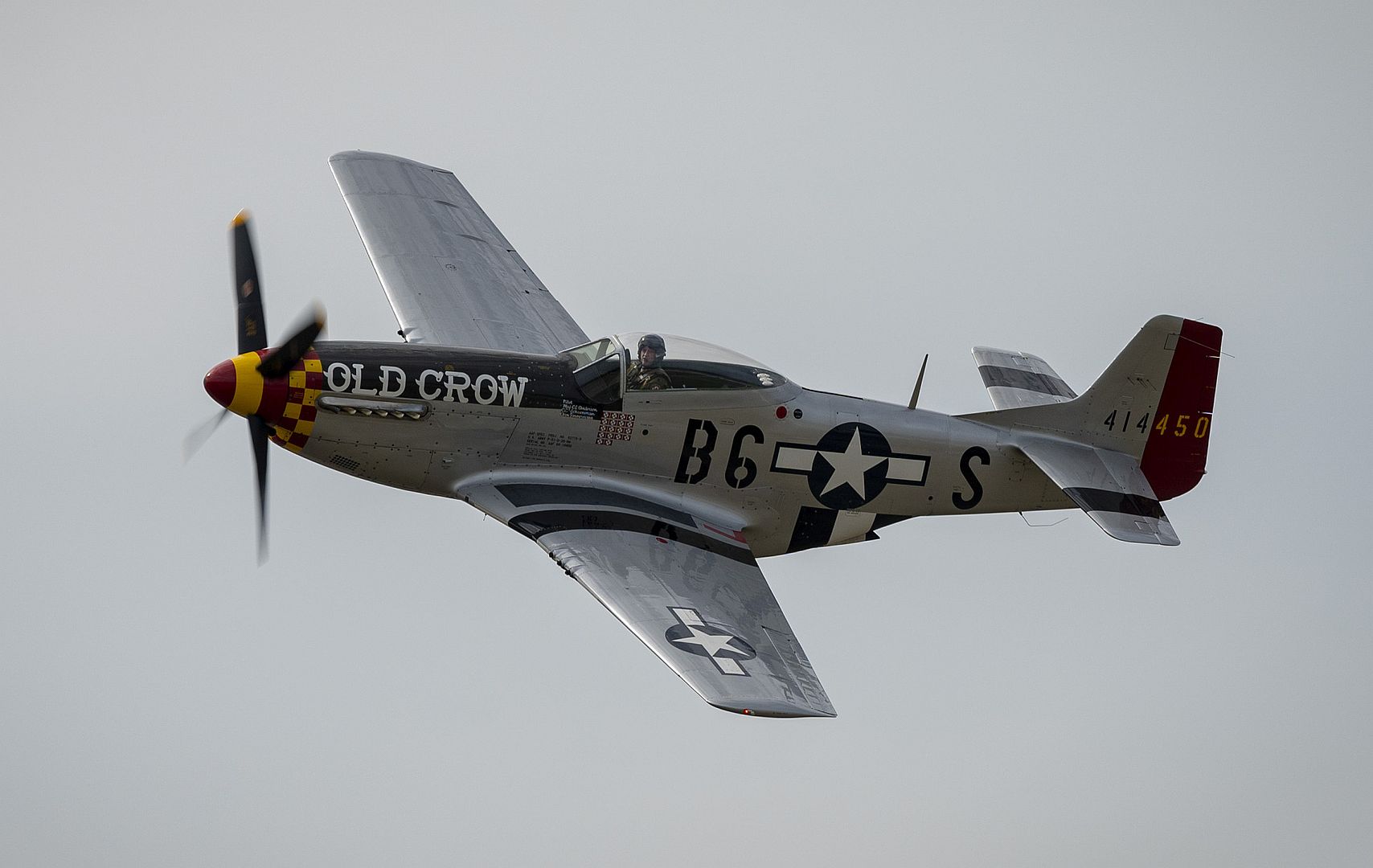
The 187th Fighter Wing unveiled the new Alabama Air National Guard’s F-35 Lightning II fighter jet during an event at Montgomery, Ala., February 9, 2024. The 187th Fighter Wing traces its lineage to the Red Tails, with the F-35 being the 6th airplane the unit has flown. (U.S. Air Force photo by Staff Sgt. Enrique Barcelo)
PACIFIC OCEAN (February 11, 2024) Aviation Boatswain’s Mate 2nd Class Robert Miller, from Palatka, Florida, assigned to the forward-deployed amphibious assault carrier USS America (LHA 6), launches a F-35B Lightning II aircraft from the 31st Marine Expeditionary Unit’s (MEU) Air Combat Element (ACE), off of the ships flight deck while conducting routine operations in the Pacific Ocean, February 11. America, lead ship of the America Amphibious Ready Group, is operating in the U.S. 7th Fleet area of operations. U.S. 7th Fleet is the U.S. Navy’s largest forward-deployed numbered fleet, and routinely interacts and operates with allies and partners in preserving a free and open Indo-Pacific region. (U.S. Navy photo by Mass Communication Specialist 2nd Class Thomas B. Contant)
-
1 year agoTue Feb 13 2024, 08:55pmDuggy
 Main AdminA U.S. Air Force F-15E Strike Eagle assigned to the 492nd Fighter Squadron takes off at RAF Lakenheath, England, Feb. 13, 2024. The Liberty Wing ensures the preparation of aircrew through routine flight operations, ensuring mission readiness. (U.S. Air Force photo by Airman 1st Class Alexander Vasquez)
Main AdminA U.S. Air Force F-15E Strike Eagle assigned to the 492nd Fighter Squadron takes off at RAF Lakenheath, England, Feb. 13, 2024. The Liberty Wing ensures the preparation of aircrew through routine flight operations, ensuring mission readiness. (U.S. Air Force photo by Airman 1st Class Alexander Vasquez)
The newly painted tail of a KC-135 is captured on the flight line at Fairchild Air Force Base, Washington February 2, 2024. The tail was painted to commemorate the 100th Anniversary of the 116th Air Refueling Squadron, the predecessor to the 141st Air Refueling Wing.
(Photos by Master Sgt. Michael Stewart)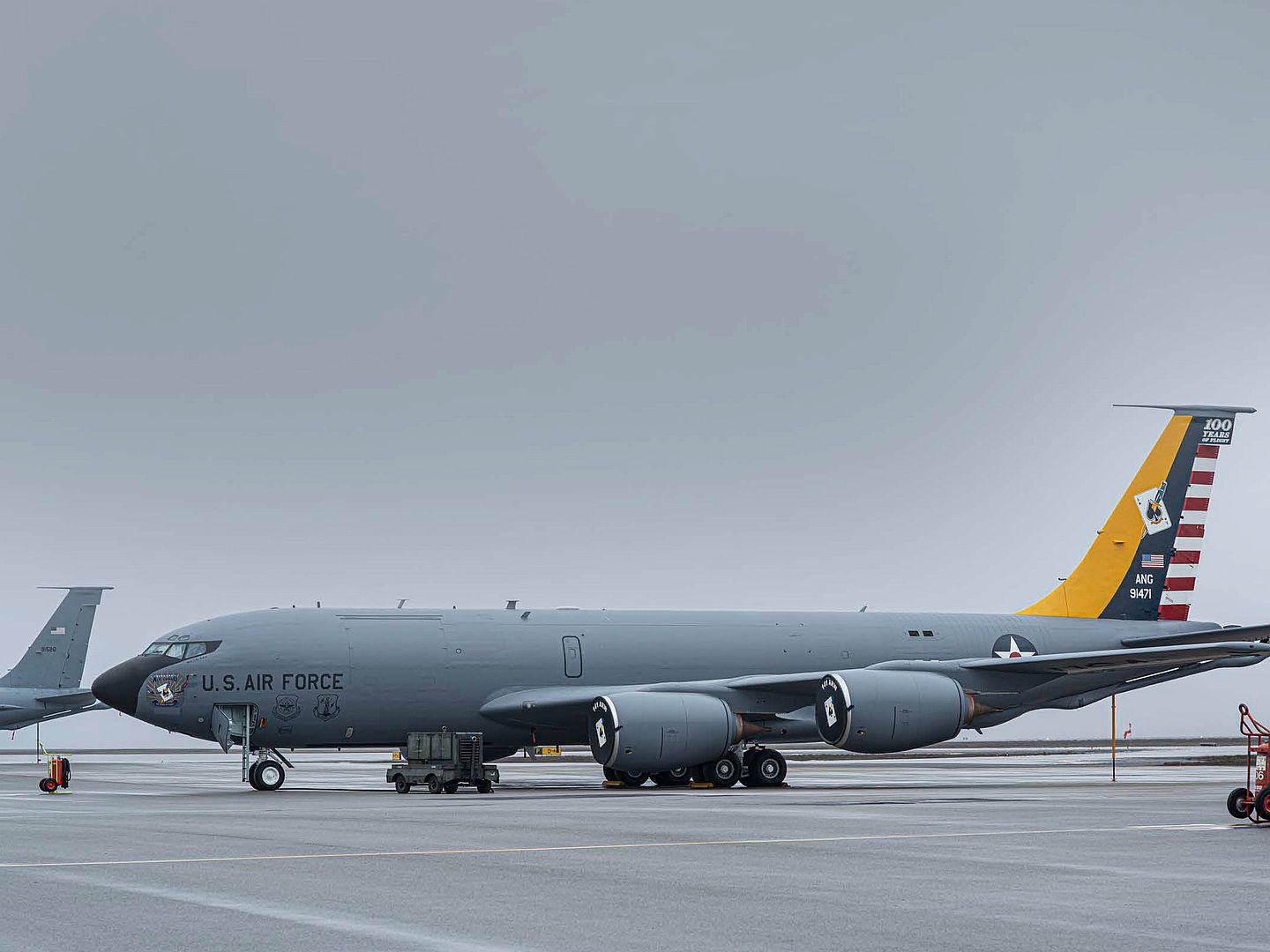
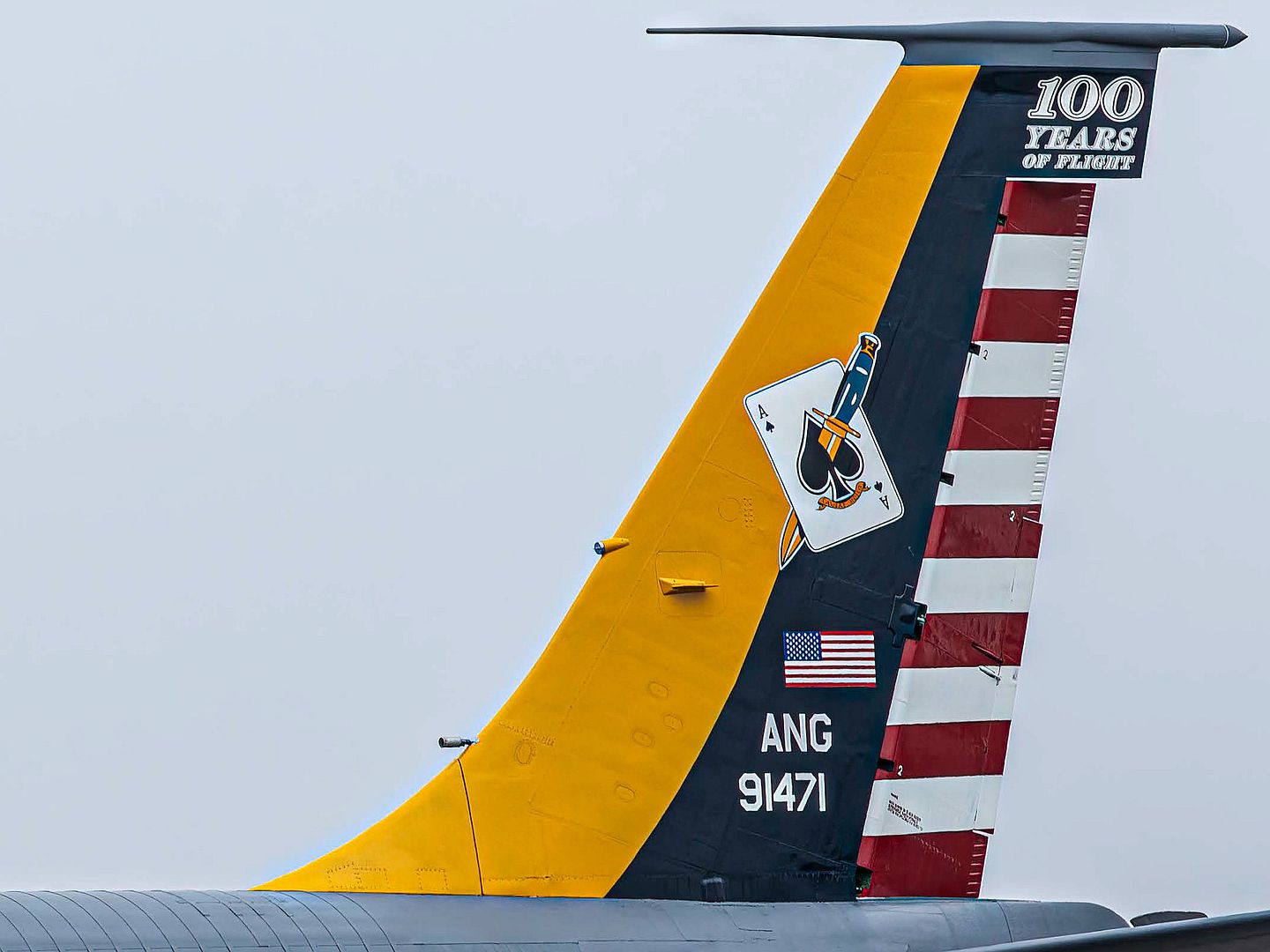
ROLLING MEADOWS, Ill. – Feb. 13, 2024 – Northrop Grumman Corporation’s (NYSE: NOC) LITENING Large Aperture (LA) targeting pod, which incorporates significant enhancements in electro-optical/infrared sensing and processing capabilities, has been tapped by the U.S. Air Force for use across existing LITENING inventory.
Digital, high-definition daylight and infrared sensors in multiple wavelengths increase the resolution of the pod, allowing imaging from greater stand-off ranges.
LITENING LA features faster video processing, greater image stabilization, enhanced pod command and control functions, and continuous roll for uninterrupted imaging during maneuvers
Enhanced air and ground targeting modes offer greater accuracy and tracking under challenging conditions.
Expert:
James Conroy, vice president, electronic warfare and targeting, Northrop Grumman: “Just as the first LITENING targeting pod transformed close air support more than 20 years ago, LA’s passive targeting capabilities have the potential to change the way pilots approach combat in high-intensity conflicts. We are widening the aperture on how electro-optical/infrared targeting can contribute to mission success, with a more advanced and powerful pod.”
Details on LITENING:
LITENING LA is an electro-optical/infrared pod for targeting and surveillance that enables aircrews to detect, acquire, identify and track targets at long ranges. It enables a wide range of missions, including precision targeting, close air support, intelligence, surveillance and reconnaissance and humanitarian assistance.
The pod features high-resolution, digital color video and infrared sensors, datalink capability and advanced algorithms to detect, identify and engage targets from long ranges. A more powerful mission processor accelerates imaging functions and allows for future capabilities, including artificial intelligence and machine learning.
LITENING LA packages these enhanced capabilities in the same form factor as earlier versions of the pod, so aircraft on which LITENING has been integrated require no modifications. Previous versions of the pod can be upgraded to the LA configuration.
The Air Force plans to integrate LITENING LA throughout its existing aircraft inventory, as it has done since first selecting LITENING in 1999.
Northrop Grumman is a leading global aerospace and defense technology company. Our pioneering solutions equip our customers with the capabilities they need to connect and protect the world and push the boundaries of human exploration across the universe. Driven by a shared purpose to solve our customers’ toughest problems, our employees define possible every day.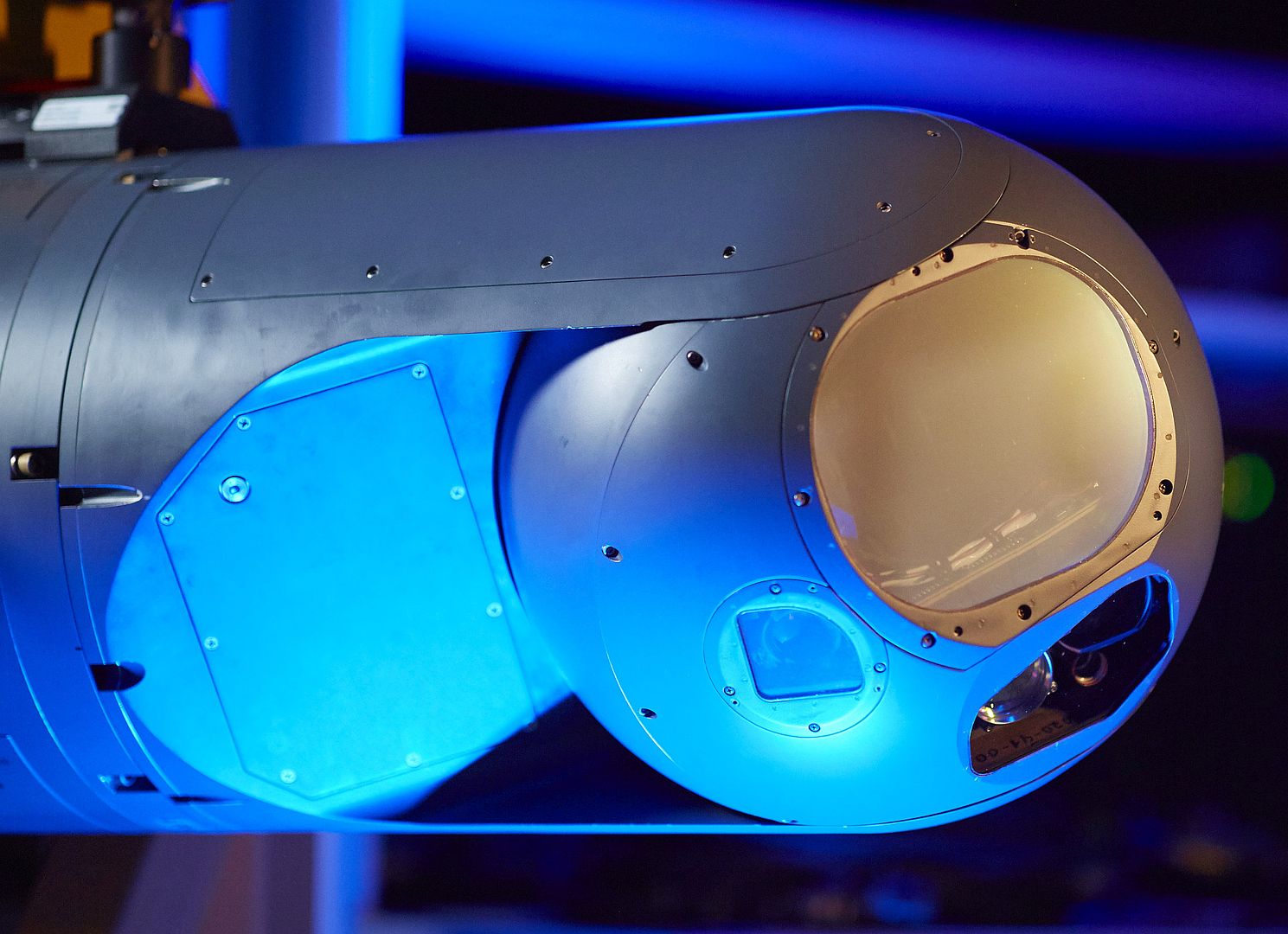
Feb 13 2024.
BAE Systems will provide advanced electromagnetic warfare (EW) mission systems for aircraft 7-10 in the U.S. Air Force’s growing fleet of EA-37B aircraft. The next-generation Baseline 4 mission systems will deliver powerful, long-range electromagnetic attack capabilities to disrupt and suppress the enemy’s use of the electromagnetic spectrum for communications, navigation, and air defense.
“The EA-37B’s unique and exquisite EW capabilities make it a powerful asset for the U.S. Air Force and coalition forces,” said Duane Beaulieu, Compass Call technical director at BAE Systems. “As the EA-37B fleet comes on line, the Air Force will be better equipped to dominate the electromagnetic spectrum.”
Compass Call is the Department of Defense’s only long-range, full-spectrum stand-off electromagnetic warfare jamming platform. The fleet of 14 EC-130H Compass Call aircraft is being replaced with 10 modernized EA-37B aircraft. The modern EA-37B airframes will help the warfighter maintain mission readiness and provide improvements in speed, altitude, endurance, and survivability.
BAE Systems has provided the Compass Call mission systems for decades, continually evolving the technology to address modern threats and redesigning hardware for the cross-deck onto the smaller EA-37B airframe. In September, the first EA-37B aircraft was delivered to the U.S. Air Force, and the platform is currently in developmental and operational testing.
The Compass Call mission is to counter enemies’ command and control, computing, communications, combat systems, and intelligence, surveillance, reconnaissance, and targeting (C5ISRT) capabilities. Future mission system modernization efforts will enhance counter-C5ISRT operations and use software-defined radios and an open architecture to rapidly insert new capabilities to address evolving threats.
BAE Systems produces the EA-37B mission system in Hudson, New Hampshire. For more information, visit www.baesystems.com/compasscall.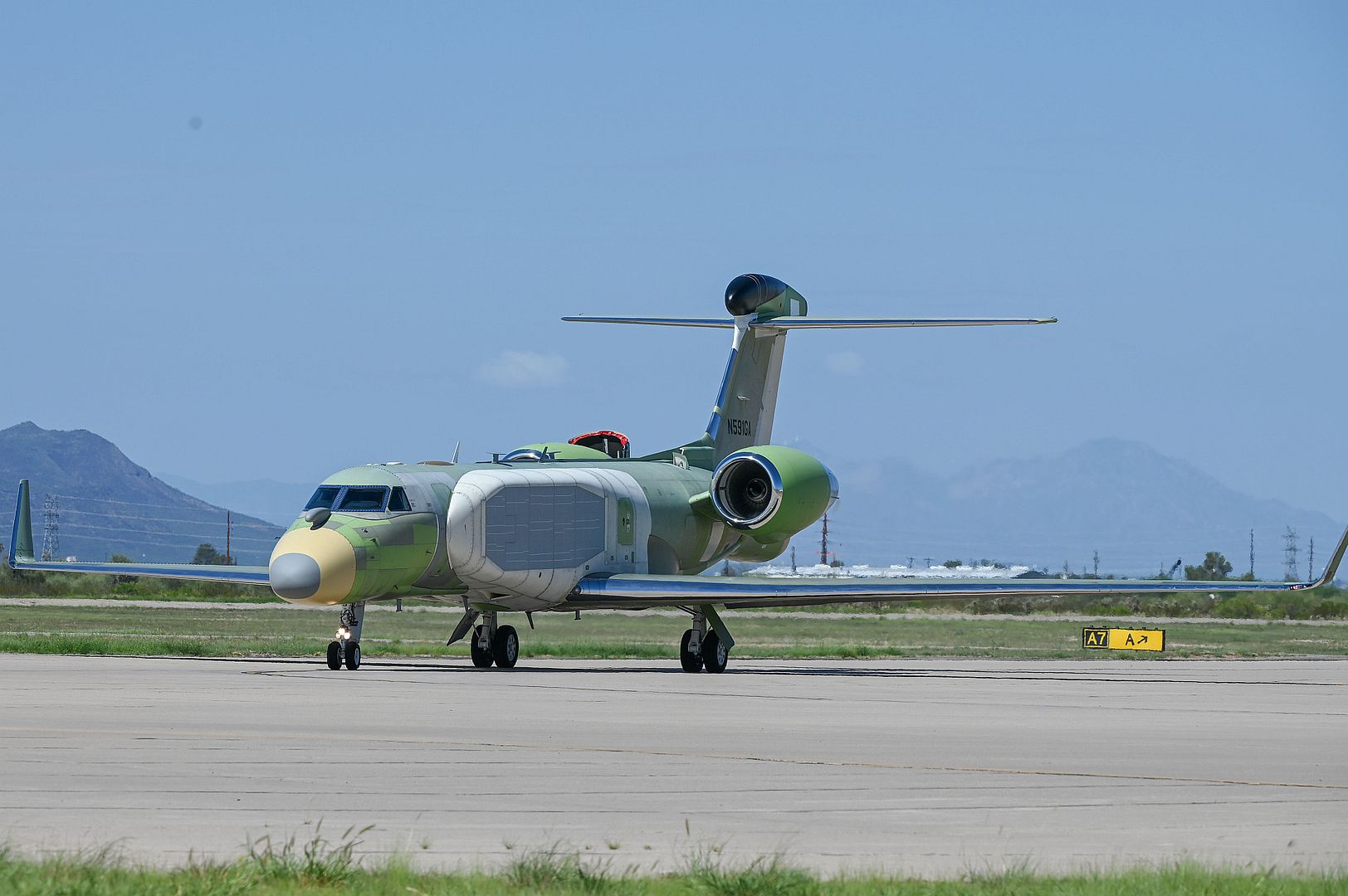
Military (political) decision-making starts with good information and intelligence. In order to strengthen the Netherlands' own intelligence position, the Government decided to purchase the MQ-9 Reaper in 2018. With that, the Netherlands also fulfills one of NATO's priorities. On Monday, February 12, the MQ-9 system was completely handed over to the Koninklijke Luchtmacht and the Air Force Commander Andre Steur declared the completely newly created unit, the 306 Squadron, formally operational.
After receiving the first planes in 2022, experience was gained in the Caribbean part of the Kingdom. The platform has been tested and practiced a lot there, together with the Koninklijke Marine In addition to achieving all training objectives, the 306 Squadron has also made a significant contribution to the interception of more than 16,000 kilos of drugs.
Commander of the Air Force Lieutenant General André Steur stated that he was particularly proud and happy and called this milestone a "major achievement". He praised the pioneering work of the 306 Squadron, the colleagues at Commando Material and IT and all others who contributed to the now operational MQ-9. Two pioneers of the first hour were appointed separately by Steur. Colonel Roddenhof and Lieutenant Colonel Balk - Ten Bruggencate received the Badge of Merit in bronze for their efforts within the MQ-9 project.
The MQ-9's have meanwhile moved from Curaçao to Romania. Over the next 6 months, the 306 Squadron will provide information on military developments on the eastern border of NATO territory. With this, the squadron makes an important contribution to the information needs of the Netherlands and the NATO allies.
(Photo courtesy of the Koninklijke Luchtmacht.)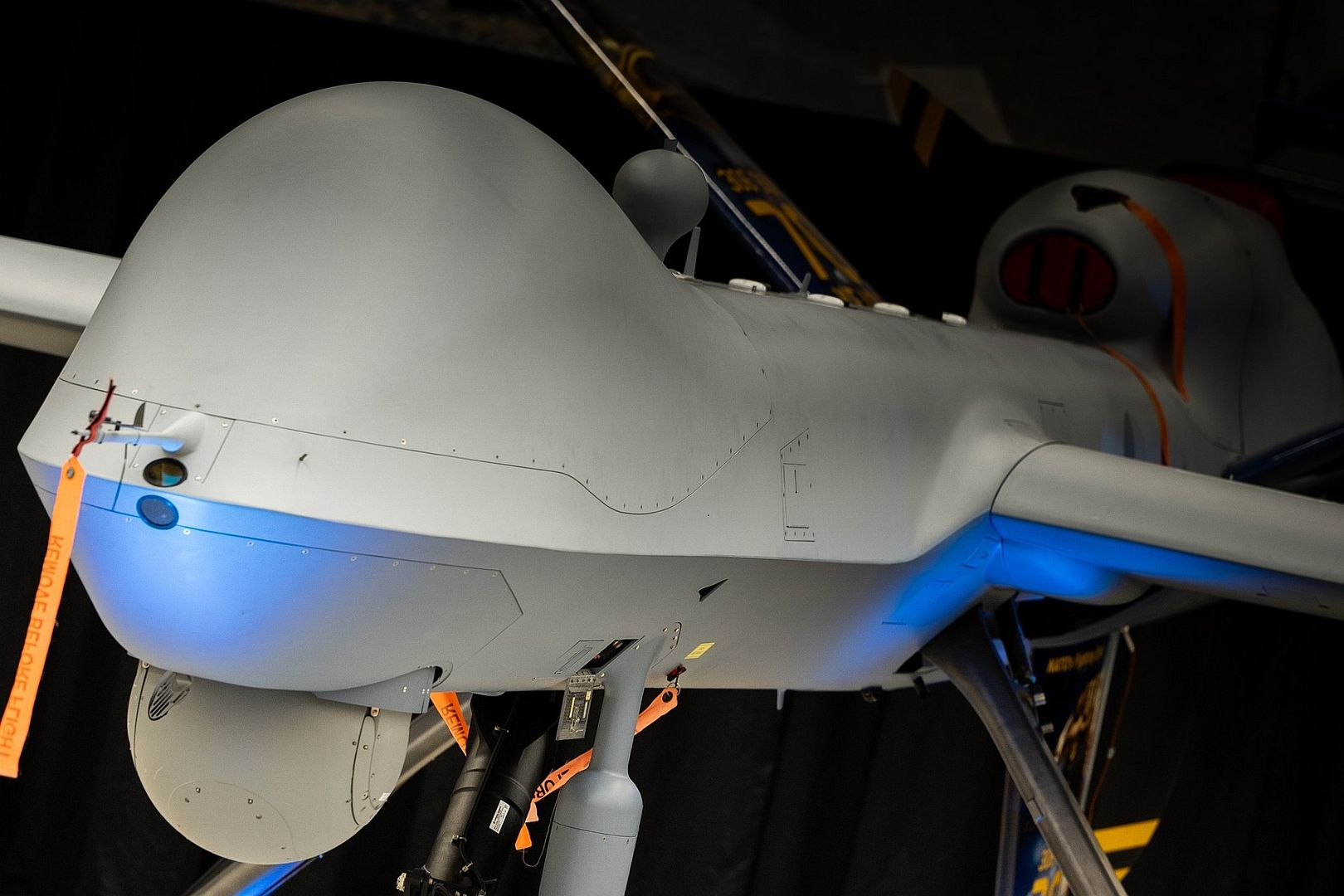
-
 Main AdminU.S. Marine Corps pilots with Marine Fighter Attack Squadron (VMFA) 542, 2nd Marine Aircraft Wing, stage in formation at Marine Corps Air Station Cherry Point, North Carolina, Feb. 13, 2024. VMFA-542 is scheduled to deploy to Norway for Exercise Nordic Response 24. Exercise Nordic Response, formerly known as Cold Response, is a NATO training event conducted every two years to promote military competency in arctic environments and to foster interoperability between the U.S. Marine Corps and allied nations. (U.S. Marine Corps photos by Lance Cpl. Madison Blackstock)
Main AdminU.S. Marine Corps pilots with Marine Fighter Attack Squadron (VMFA) 542, 2nd Marine Aircraft Wing, stage in formation at Marine Corps Air Station Cherry Point, North Carolina, Feb. 13, 2024. VMFA-542 is scheduled to deploy to Norway for Exercise Nordic Response 24. Exercise Nordic Response, formerly known as Cold Response, is a NATO training event conducted every two years to promote military competency in arctic environments and to foster interoperability between the U.S. Marine Corps and allied nations. (U.S. Marine Corps photos by Lance Cpl. Madison Blackstock)_542_2nd_Marine_Aircraft_Wing_stage_in_formation_at_Marine_Corps_Air_Station_Cherry_Point_North_Carolina_Feb._13_2024-1.jpg?width=1920&height=1080&fit=bounds)
_542_2nd_Marine_Aircraft_Wing_stage_in_formation_at_Marine_Corps_Air_Station_Cherry_Point_North_Carolina_Feb._13_2024.jpg?width=1920&height=1080&fit=bounds)
U.S. Air Force Senior Airman Grayson Jones, crew chief, prepares a B-52H Stratofortress assigned to the 23rd Expeditionary Bomb Squadron for take off, at Andersen Air Force Base, Guam, as part of a routine Bomber Task Force mission, Feb.12, 2024. Bomber missions provide opportunities to train and work with our Allies and partners in joint and coalition operations and exercises. (U.S. Air Force photo by Master Sgt. Amy Picard)
A U.S. Air Force MQ-9 Reaper assigned to March Air Reserve Base, Calif., taxis after landing for the first time at Shaw Air Force Base, S.C., Feb. 14, 2024. The aircraft was remotely piloted by members of the 25th Attack Group who operate out of Shaw AFB daily, providing 24-hour air support to missions worldwide across four Combatant Commands. ( U.S. Air Force photo by Airman 1st Class Kyrii Richardson)
PACIFIC OCEAN (Feb. 12, 2024) An F-35C Lightning II, assigned to Marine Fighter Attack Squadron (VMFA) 314, prepares to make an arrested landing on the flight deck of the flight deck of the Nimitz-class aircraft carrier USS Abraham Lincoln (CVN 72). The Abraham Lincoln Carrier Strike Group is underway in the U.S. 3rd Fleet area of operations conducting advanced tactical training that increases warfighting capability and tactical proficiency across all domains. (U.S. Navy photo by Mass Communication Specialist 2nd Class Clayton A. Wren)_314_prepares_to_make_an_arrested_landing_on_the_flight_deck_of_the_flight_deck_of_the_Nimitz-class_aircraft_carrier_USS_Abraham_Lincoln.jpg?width=1920&height=1080&fit=bounds)
A Japan Air Self Defense Force Mitsubishi F-2A taxis over an AM-2 mat during Cope North 24 at Northwest Field, Andersen Air Force Base, Guam, Feb. 8, 2024. AM-2 matting form portable runways, taxiways, and parking for aircraft, enabling a wide range of air operations in contested or austere environments. (U.S. Air Force photo by Senior Airman Tylir Meyer)
A French Air and Space Force Airbus A-400M Atlas passes Japan Air Self Defense Force F-15J Eagles during take off from Northwest Field, Andersen Air Force Base, Guam, Feb. 8, 2024 during Cope North 24. Continued collaboration and integration of dispersed operations during Cope North 24 enhances the joint force’s capabilities to operate in austere environments. (U.S. Air Force photo by Senior Airman Tylir Meyer)
-
 Main AdminA U.S. Air Force KC-135R Stratotanker refuels a Royal Air Force Typhoon during the Spears of Victory exercise hosted by the Royal Saudi Air Force, at an undisclosed location over the U.S. Central Command area of responsibility, Feb. 13, 2024. The Royal Saudi Air Force-hosted exercise involved eight global partners. The training highlighted the group’s ability to operate on similar platforms and weapon systems, improving their ability to provide regional stability. (U.S. Air Force photo)
Main AdminA U.S. Air Force KC-135R Stratotanker refuels a Royal Air Force Typhoon during the Spears of Victory exercise hosted by the Royal Saudi Air Force, at an undisclosed location over the U.S. Central Command area of responsibility, Feb. 13, 2024. The Royal Saudi Air Force-hosted exercise involved eight global partners. The training highlighted the group’s ability to operate on similar platforms and weapon systems, improving their ability to provide regional stability. (U.S. Air Force photo)
An A-10 Thunderbolt performs a test flight at Hill Air Force Base, Utah, Feb. 14, 2024. The A-10 Thunderbolt was the first Air Force aircraft specially designed for close air support of ground forces. They are simple, effective and survivable twin-engine jet aircraft that can be used against light maritime attack aircraft and all ground targets, including tanks and other armored vehicles. (U.S. Air Force photo by Senior Airman Jack Rodgers)
A U.S. Air Force F-35A Lightning II, a single seat, single engine, all-weather stealth multirole fighter aircraft, takes off from Hill Air Force Base, Utah Feb. 14, 2024. (U.S. Air Force photo by Senior Airman Jack Rodgers)
U.S. Navy Sailors, right, assigned to the Whidbey Island-class dock landing ship USS Gunston Hall (LSD 44), and a French navy sailor, assigned to the French frigate FS Normandie (D651), connect a cargo net to a French Navy NH90 helicopter during a vertical replenishment in support of Steadfast Defender 24, Feb. 14, 2024. Steadfast Defender 2024, NATO’s largest exercise in decades, will demonstrate NATO’s ability to deploy forces rapidly from across the Alliance to reinforce the defense of Europe. (U.S. Navy photo by Mass Communication Specialist 1st Class Danielle Serocki)
PHILIPPINE SEA (Feb. 15, 2024) U.S. Sailors transport aircraft on the flight deck of the Nimitz-class aircraft carrier USS Theodore Roosevelt (CVN 71), Feb. 15, 2024. Theodore Roosevelt, flagship of Carrier Strike Group Nine, is underway conducting routine operations in the U.S. 7th Fleet area of operations. An integral part of U.S. Pacific Fleet, U.S. 7th Fleet operates naval forces in the Indo-Pacific and provides the realistic, relevant training necessary to execute the U.S. Navy’s role across the full spectrum of military operations – from combat operations to humanitarian assistance and disaster relief. U.S. 7th Fleet works together with our allies and partners to advance freedom of navigation, the rule of law, and other principles that underpin security for the Indo-Pacific region. (U.S. Navy photo by Mass Communication Specialist 3rd Class Adina Phebus)_Feb._15_2024.jpg?width=1920&height=1080&fit=bounds)
Two Italian air force Eurofighter Typhoons assigned to the 51st Wing at Istrana Air Base, Italy, taxi post-flight during a defensive counter-air training at Aviano Air Base, Itay, Jan. 31, 2024. The 555th Fighter Squadron and the 51st Wing completed DCA training over the Adriatic Sea. (U.S. Air Force photo by Airman 1st Class Joseph Bartoszek)
An Italian air force pilot prepares to exit an Italian air force Eurofighter Typhoon post-flight during a defensive-counter air training at Aviano Air Base, Italy, Jan. 31, 2024. The training consisted of a 40-minute DCA operations period over the Adriatic Sea with four U.S. Air Force F-16s and two Italian air force Eurofighter Typhoons. (U.S. Air Force photo by Airman 1st Class Joseph Bartoszek)
A Japan Maritime Self-Defense Force ShinMaywa US-2 Flying Boat sits on the flightline during Cope North 24 at Andersen Air Force Base, Guam, Feb. 14, 2024.
Continued collaboration and integration of dispersed operations amongst Allies and partners creates an asymmetric advantage through access, interoperability, increased partner capacity, and increased domain awareness. (U.S. Air Force photo by Staff Sgt. Gerald R. Willis)
The Royal Air Force Coningsby based XI (Fighter) Squadron Typhoons that are in the Kingdom of Saudi Arabia taking part in this year’s Spears of Victory exercise are flying daily sorties as part of a large coalition of nations.


Squadron Leader Hodgkinson, the UK Detachment Commander, said: “The missions that are flown on Spears of Victory 24 are the centre piece of the exercise. Pilots and aircrew on a multinational exercise are able to build relationships through shared experiences."
(Photos courtesy of the RAF)



-
 Main AdminU.S. Marines with Combat Logistics Battalion 8, Combat Logistics Regiment 2, 2nd Marine Logistics Group, run to attach a heavy beam to a CH-53E Super Stallion during a helicopter support team training event for their Marine Corps Combat Readiness Evaluation (MCCRE) on Camp Lejeune, North Carolina, Feb. 15, 2024. CLB-8’s MCCRE is the battalion's final evaluation to demonstrate combat readiness through proficiency in core mission essential tasks. (U.S. Marine Corps photos by Cpl. Mary Kohlmann)
Main AdminU.S. Marines with Combat Logistics Battalion 8, Combat Logistics Regiment 2, 2nd Marine Logistics Group, run to attach a heavy beam to a CH-53E Super Stallion during a helicopter support team training event for their Marine Corps Combat Readiness Evaluation (MCCRE) on Camp Lejeune, North Carolina, Feb. 15, 2024. CLB-8’s MCCRE is the battalion's final evaluation to demonstrate combat readiness through proficiency in core mission essential tasks. (U.S. Marine Corps photos by Cpl. Mary Kohlmann)_on_Camp_Lejeune_North_Carolina_Feb._15_2024..jpg?width=1920&height=1080&fit=bounds)
_on_Camp_Lejeune_North_Carolina_Feb._15_2024.-1.jpg?width=1920&height=1080&fit=bounds)
Members of the 163d Attack Wing pilot an MQ-9 Reaper taxing down the runway after returning home from a milestone mission to Shaw Air Force Base, South Carolina, February 15th, 2013. The mission marked the first ever MQ-9 to grace the runway at Shaw AFB. This one of many examples of how the 163d ATKW is pushing innovation and the MQ-9 platform to new heights.
(Photo by Tech. Sgt. Paul Duquette)
Airmen from the 375th Aeromedical Evacuation Training Squadron board a KC-46A Pegasus, flown by the 64th Air Refueling Squadron from the 157th Air Refueling Wing, during their training mission on the Air Force’s newest air-refueling tanker at Wright-Patterson Air Force Base, Ohio, Feb. 14, 2024. The KC-46A will join the C-130 Hercules, C-17 Globemaster and KC-135 Stratotanker as aircraft required for universal qualification by aeromedical evacuation personnel. (U.S. Air Force photo by Ashley Richards)
A KC-135R Stratotanker assigned to the 155th Air Refueling Wing flies performing touch-and-goes, Feb. 15, 2024 at the National Guard air base in Lincoln, Nebraska. The maneuver involves landing on a runway and taking off again without coming to a complete stop. (U.S. Air National Guard photo by Senior Airman Alexander D. Schriner)
An F/A-18F Super Hornet attached to Strike Fighter Squadron (VFA) 103 prepares to launch off Nimitz-class aircraft carrier USS George Washington (CVN 73) in the Atlantic Ocean, Feb. 14, 2024. George Washington is conducting Tailored Ships Training Availability and Final Evaluation Problem (TSTA/FEP). TSTA prepares the ship and crew for full integration into a carrier strike group through a wide range of mission critical operations. (U.S. Navy photo by Mass Communication Specialist 3rd Class August Clawson)_103_prepares_to_launch_off_Nimitz-class_aircraft_carrier_USS_George_Washington.jpg?width=1920&height=1080&fit=bounds)
ATLANTIC OCEAN, (Feb. 14, 2024) An F/A-18E Super Hornet, attached to the “Pukin Dogs” of Strike Fighter Squadron (VFA) 143, approachs for landing on the flight deck of the Nimitz-class aircraft carrier USS Harry S. Truman (CVN 75), Feb. 14, 2024. Truman is the flagship of the Harry S. Truman Carrier Strike Group and is currently underway conducting flight deck certification as part of the basic phase. (U.S. Navy photo by Mass Communication Specialist 2nd Class Matthew Nass)_143_approachs_for_landing_on_the_flight_deck_of_the_Nimitz-class_aircraft_carrier_USS_Harry_S._Truman.jpg?width=1920&height=1080&fit=bounds)
ATLANTIC OCEAN, (Feb. 14, 2024) An F/A-18E Super Hornet, attached to the “Pukin Dogs” of Strike Fighter Squadron (VFA) 143, prepares to launch from the flight deck of the Nimitz-class aircraft carrier USS Harry S. Truman (CVN 75), Feb. 14, 2024. Truman is the flagship of the Harry S. Truman Carrier Strike Group and is currently underway conducting flight deck certification as part of the basic phase. (U.S. Navy photo by Mass Communication Specialist 2nd Class Matthew Nass)_143_prepares_to_launch_from_the_flight_deck_of_the_Nimitz-class_aircraft_carrier_USS_Harry_S._Truman.jpg?width=1920&height=1080&fit=bounds)
A RAAF Wedgetail lands at RAF Lossiemouth. Following a successful deployment in Germany.
The aircraft and crew are on their return journey to Australia, following a deployment to Germany as part of Operation KUDU, where they provided early warning of any threats aiding in the protection of multinational logistic hubs that supply critical support into Ukraine.
On arrival, personnel from the RAF’s VIII Squadron met their colleagues from 2 Squadron RAAF. Both squadrons have worked closely together over many years in developing and training on Wedgetail.
(Photos courtesy of the RAF)
-
 Main AdminA U.S. Marine Corps F-35B Lightning II jet with Marine Fighter Attack Squadron (VMFA) 542, 2nd Marine Aircraft Wing, lands in preparation for Exercise Nordic Response 24 in Norway, Feb. 16, 2024. Exercise Nordic Response, formerly known as Cold Response, is a NATO training event conducted every two years to promote military competency in arctic environments and to foster interoperability between the U.S. Marine Corps and allied nations. Exercise Nordic Response 24 is VMFA-542's first overseas operational exercise as an F-35B Lightning II jet squadron. (U.S. Marine Corps photo by Lance Cpl. Orlanys Diaz Figueroa)
Main AdminA U.S. Marine Corps F-35B Lightning II jet with Marine Fighter Attack Squadron (VMFA) 542, 2nd Marine Aircraft Wing, lands in preparation for Exercise Nordic Response 24 in Norway, Feb. 16, 2024. Exercise Nordic Response, formerly known as Cold Response, is a NATO training event conducted every two years to promote military competency in arctic environments and to foster interoperability between the U.S. Marine Corps and allied nations. Exercise Nordic Response 24 is VMFA-542's first overseas operational exercise as an F-35B Lightning II jet squadron. (U.S. Marine Corps photo by Lance Cpl. Orlanys Diaz Figueroa)_542_2nd_Marine_Aircraft_Wing_lands_in_preparation_for_Exercise_Nordic_Response_24_in_Norway_Feb._16_2024..jpg?width=1920&height=1080&fit=bounds)
U.S. Marines with 31st Marine Expeditionary Unit, prepare an F-35B Lightning II fighter aircraft for takeoff during a quick response exercise aboard the amphibious assault ship USS America (LHA 6), in the Philippine Sea, Feb. 17, 2024. The exercise simulated launching an expedited attack on enemy vessels in close proximity to the USS America. The 31st MEU is operating aboard ships of the America Amphibious Ready Group in the 7th Fleet area of operations, the U.S. Navy’s largest forward-deployed numbered fleet, and routinely interacts and operates with allies and partners in preserving a free and open Indo-Pacific region. (U.S. Marine Corps photo by Lance Cpl. Osmar Gutierrez)
ATLANTIC OCEAN, (Feb. 17, 2024) An F/A-18E Super Hornet, attached to the “Pukin' Dogs” of Strike Fighter Squadron (VFA) 143, lands on the flight deck of the Nimitz-class aircraft carrier USS Harry S. Truman (CVN 75), Feb. 17, 2024. Truman is the flagship of the Harry S. Truman Carrier Strike Group and is currently underway conducting flight deck certification as part of the basic phase. (U.S. Navy photo by Mass Communication Specialist 2nd Class Matthew Nass)_143_lands_on_the_flight_deck_of_the_Nimitz-class_aircraft_carrier_USS_Harry_S._Truman.jpg?width=1920&height=1080&fit=bounds)
ATLANTIC OCEAN, (Feb. 15, 2024) An F/A-18E Super Hornet, attached to the “Pukin Dogs” of Strike Fighter Squadron (VFA) 143 and a F/A-18E Super Hornet, attached to the “Inferno” of Strike Fighter Squadron (VFA) 81, line up on the flight deck of the Nimitz-class aircraft carrier USS Harry S. Truman (CVN 75), Feb. 15, 2024. Truman is the flagship of the Harry S. Truman Carrier Strike Group and is currently underway conducting flight deck certification as part of the basic phase. (U.S. Navy photo by Mass Communication Specialist Seaman Natalia Thoen)_81_line_up_on_the_flight_deck_of_the_Nimitz-class_aircraft_carrier_USS_Harry_S._Truman.jpg?width=1920&height=1080&fit=bounds)
WICHITA, Kan. (Feb. 19, 2024) Textron Aviation today announced a purchase agreement for the first Cessna SkyCourier passenger variant in Australia to regional airline Hinterland Aviation. The aircraft, expected to deliver in 2026, will add to Hinterland’s expansive fleet of Cessna Grand Caravans to provide a greater payload capacity and increased passenger seating. This fleet expansion will greatly benefit remote communities, as well as the tourism and business sectors in Queensland.
The Cessna SkyCourier is designed and manufactured by Textron Aviation Inc., a Textron Inc. (NYSE:TXT) company.
“The SkyCourier’s incredible performance makes it a reliable business tool for customers all over the world,” said Lannie O’Bannion, senior vice president, Global Sales and Flight Operations. “With the ability to load, fly, unload and repeat — along with low operating costs and maximum cabin flexibility — the SkyCourier is a game-changer in regional connectivity. This order not only showcases the SkyCourier’s unmatched capabilities globally, but also highlights Textron Aviation’s commitment to delivering innovative solutions to meet the evolving needs of the aviation industry.”
The Cessna SkyCourier is meticulously designed to deliver unparalleled performance, unwavering reliability and cost-effective maintenance. With the ability to be operated by a single pilot and a generous payload capacity, the SkyCourier is the ultimate solution for air freight, passenger and special mission needs. The aircraft is highly adaptable and can effortlessly adjust configurations to effectively complete any mission, ensuring a significant return on investment.
“We are thrilled to announce our order of the new Cessna SkyCourier. The aircraft will be a valuable addition to our fleet, allowing us to better serve our clients’ individual needs with room for 19 passengers and access to remote runways,” said Andrew Clair, CEO, Hinterland Aviation. The SkyCourier will serve as an important tool to help grow our business, and we will be proud to be the first airline customer in Australia to operate this aircraft.”
About the Cessna SkyCourier
The Cessna SkyCourier twin-engine, high-wing turboprop offers a combination of performance and lower operating costs for air freight, commuter and special mission operators. It’s available in both freighter and passenger versions. The 19-passenger variant includes crew and passenger doors for smooth boarding, as well as large cabin windows for natural light and views. Both configurations offer single-point pressure refueling to enable faster turnarounds.
The freighter variant features a large door and a flat floor cabin that is sized to handle up to three LD3 shipping containers with an impressive 6,000 pounds of payload capability.
The aircraft is powered by two wing-mounted Pratt & Whitney PT6A-65SC turboprop engines and features the McCauley Propeller C779, a heavy-duty and reliable 110-inch aluminum four-blade propeller, which is full feathering with reversible pitch, designed to enhance the performance of the aircraft while hauling tremendous loads. The SkyCourier is operated with Garmin G1000 NXi avionics and has a maximum cruise speed of more than 200 ktas. The SkyCourier has a 900 nautical-mile maximum range.
-
1 year agoTue Feb 20 2024, 08:53pmDuggy
 Main AdminServicemen on a UH-72 Lakota helicopter prepare to land for injured role-play victims during a PATRIOT 24 search and rescue exercise, Camp Shelby, Mississippi, Feb. 19, 2024. PATRIOT is a Domestic Operations disaster-response training exercise conducted by National Guard units working with federal, state and local emergency management agencies and first responders. (Air National Guard photo by Airman 1st Class Shardae McAfee)
Main AdminServicemen on a UH-72 Lakota helicopter prepare to land for injured role-play victims during a PATRIOT 24 search and rescue exercise, Camp Shelby, Mississippi, Feb. 19, 2024. PATRIOT is a Domestic Operations disaster-response training exercise conducted by National Guard units working with federal, state and local emergency management agencies and first responders. (Air National Guard photo by Airman 1st Class Shardae McAfee)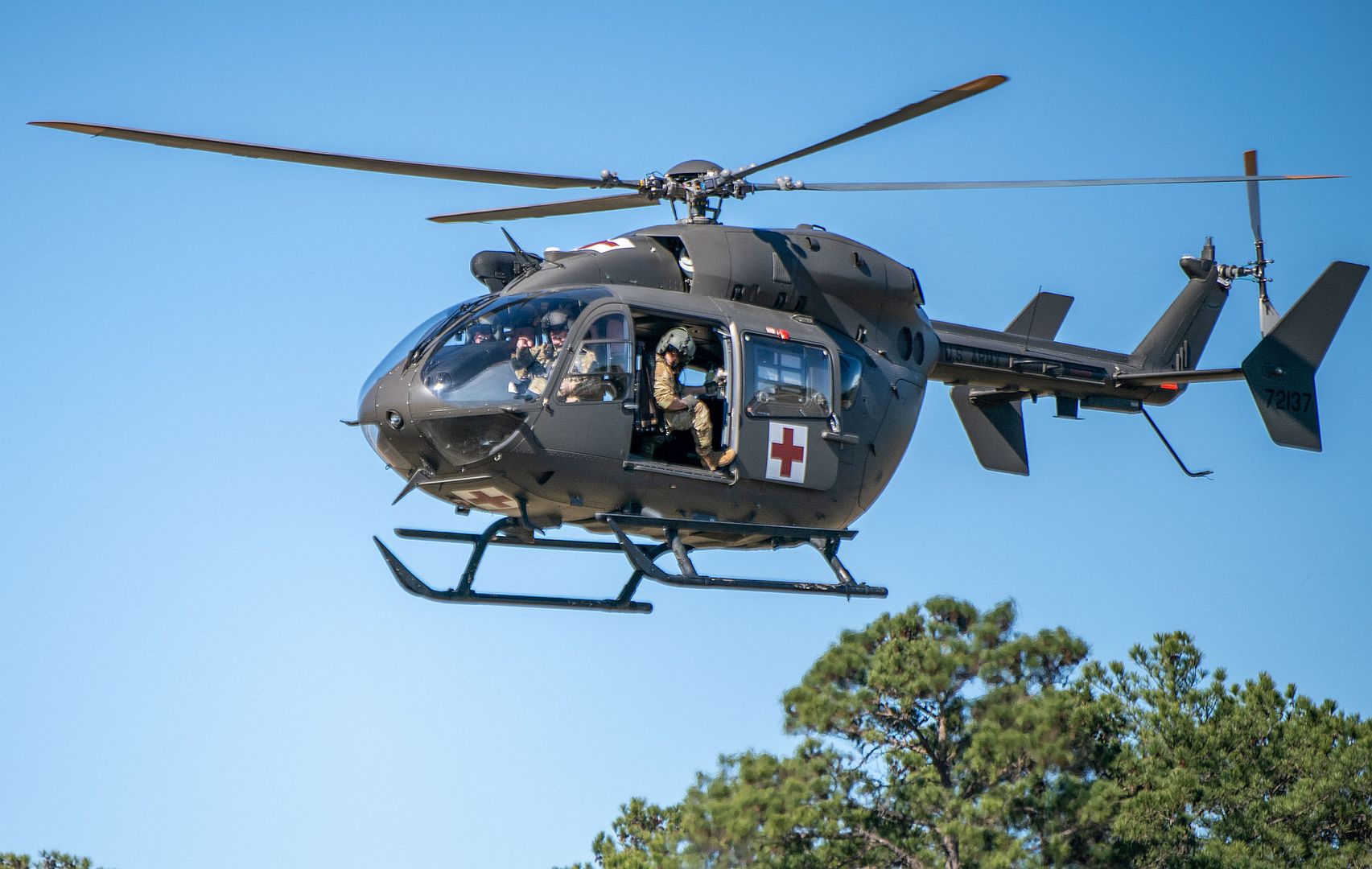
A Nepali Army Mi-17 helicopter flies over the parade field during the opening ceremony of Exercise Shanti Prayas IV, a Multinational Peacekeeping Exercise, at the Nepali Army Headquarters on Feb. 20, 2024. Shanti Prayas IV is a multinational peacekeeping exercise sponsored by the Nepali Army and U.S. Indo-Pacific Command and is the latest in a series of exercises designed to support peacekeeping operations. (U.S. Marine Corps photo by Lance Cpl John Hall)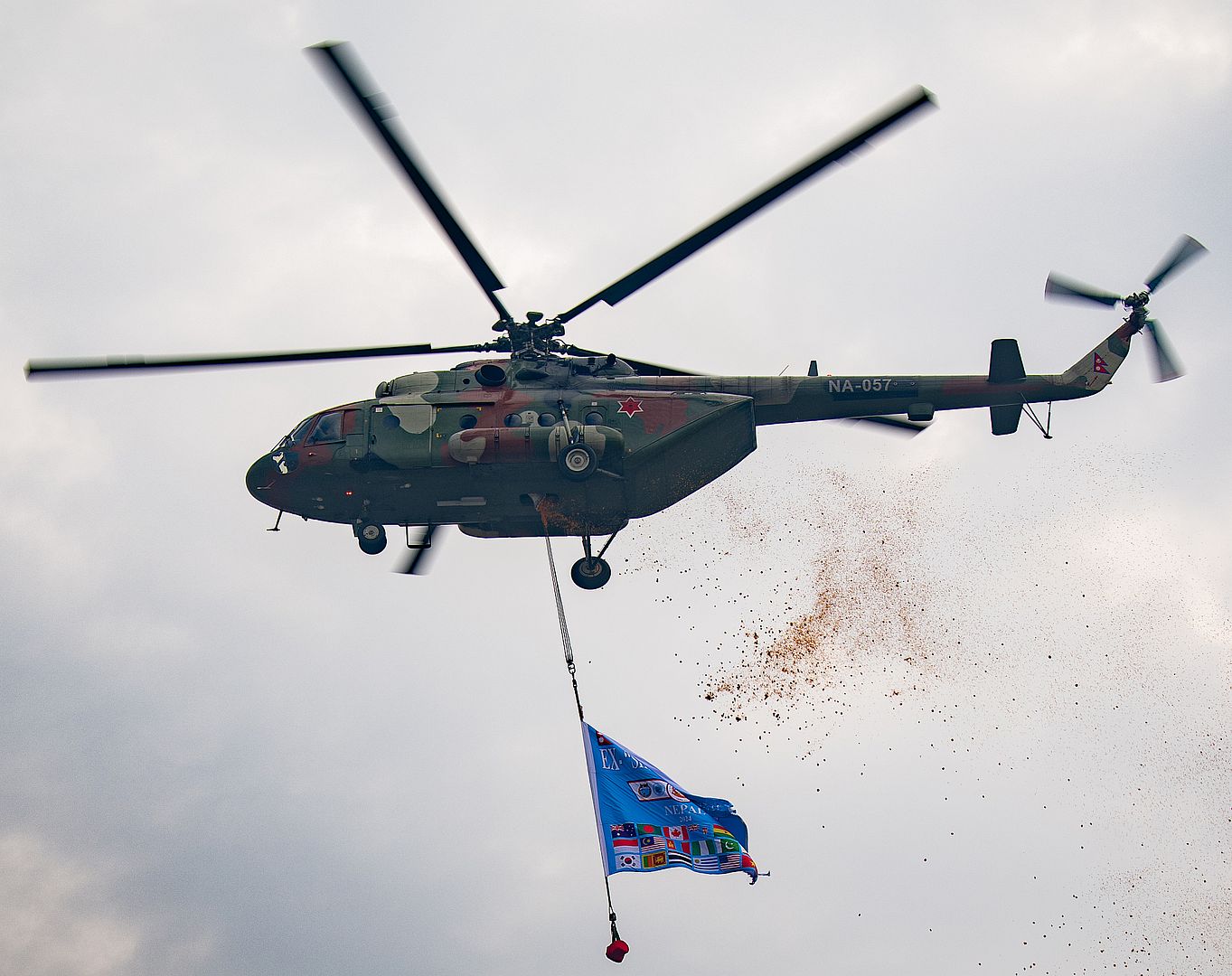
NORFOLK, Va. (Feb. 17, 2024) An E-2D Hawkeye, attached to the "Blue Tail" of Airborne Command and Control Squadron (VAW) 121, catches an arresting wire while landing on the flight deck of the Nimitz-class aircraft carrier USS Harry S. Truman (CVN 75), Feb. 17, 2024. Truman is the flagship of the Harry S. Truman Carrier Strike Group and is currently underway conducting flight deck certification as part of the basic phase. (Photo by Mass Communication Specialist Seaman Mike Shen)_121_catches_an_arresting_wire_while_landing_on_the_flight_deck_of_the_Nimitz-class_aircraft_carrier_USS_Harry_S._Truman.jpg?width=1920&height=1080&fit=bounds)
An AV-8B Harrier, assigned to Marine Attack Squadron 223 at Marine Corps Air Station Cherry Point, North Carolina, taxis to a parking spot after testing a vertical landing on an Air Force flight line during Green Flag-West 24-04 at Nellis Air Force Base, Nevada, on Feb. 15, 2024. The AV-8B Harrier was used to test the vertical landing capabilities to highlight the aircraft's versatility in supporting tactical joint operations. Green Flag-West allows the 549th Combat Training Squadron to provide relevant air-to-surface integration training within the joint and now allied forces that began in 1981 in a robust, contested, degraded, and operationally limited environment. (U.S. Air Force photo by Master Sgt. Alexandre Montes)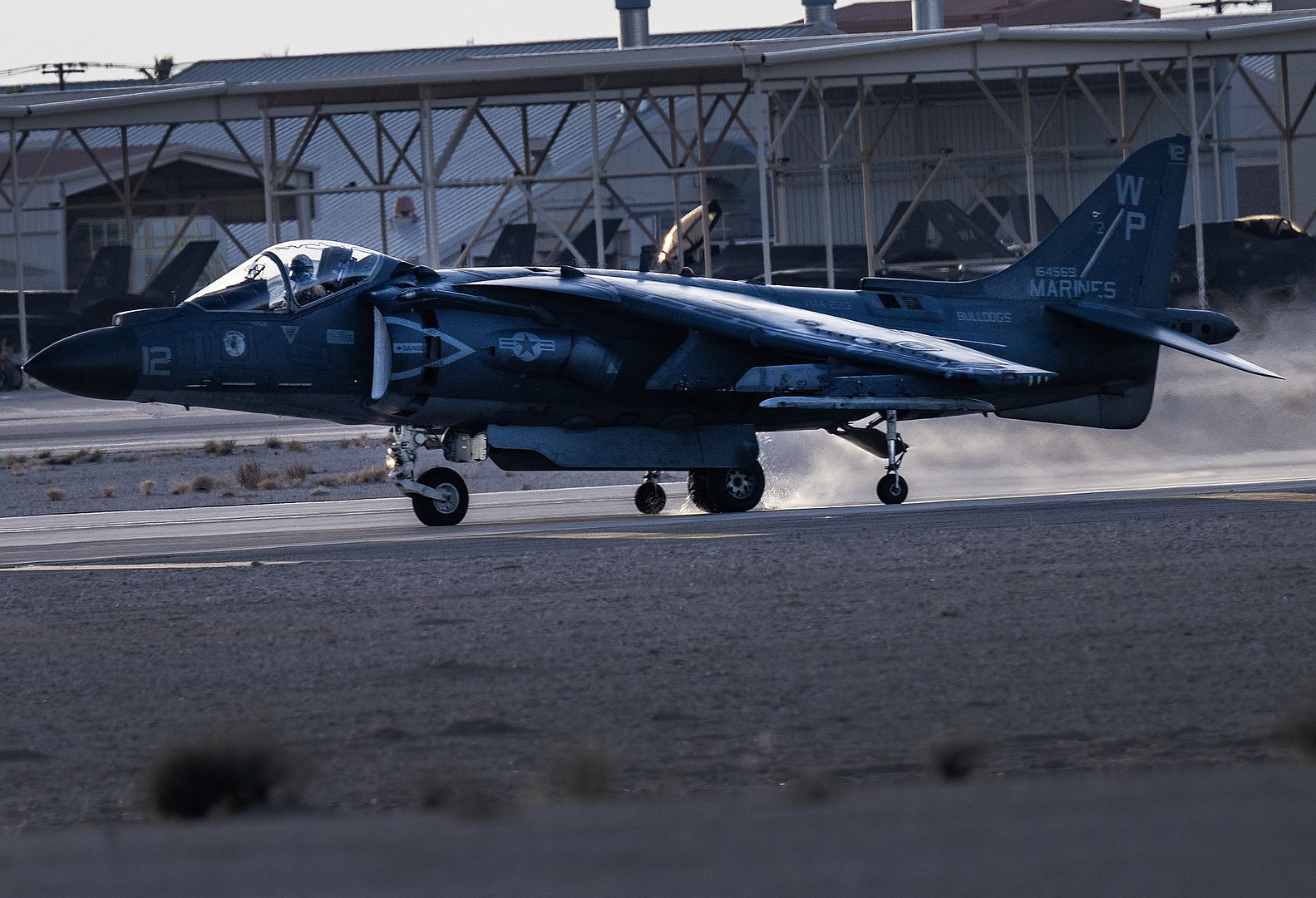
A U.S. Air Force F-35 Lighting II from the 48th Fighter Wing, Royal Air Force Lakenheath, England, approaches a KC-135 Stratotanker from the 100th Air Refueling Wing, RAF Mildenhall, England, during a find, fix, track and target exercise over Poland Feb. 15, 2024. The successful execution of this exercise demonstrates the close cooperation between U.S. and allied forces, builds on previous efforts to enhance NATO interoperability, and furthers shared commitment to global security and stability. (U.S. Air Force photo by Senior Airman Viviam Chiu)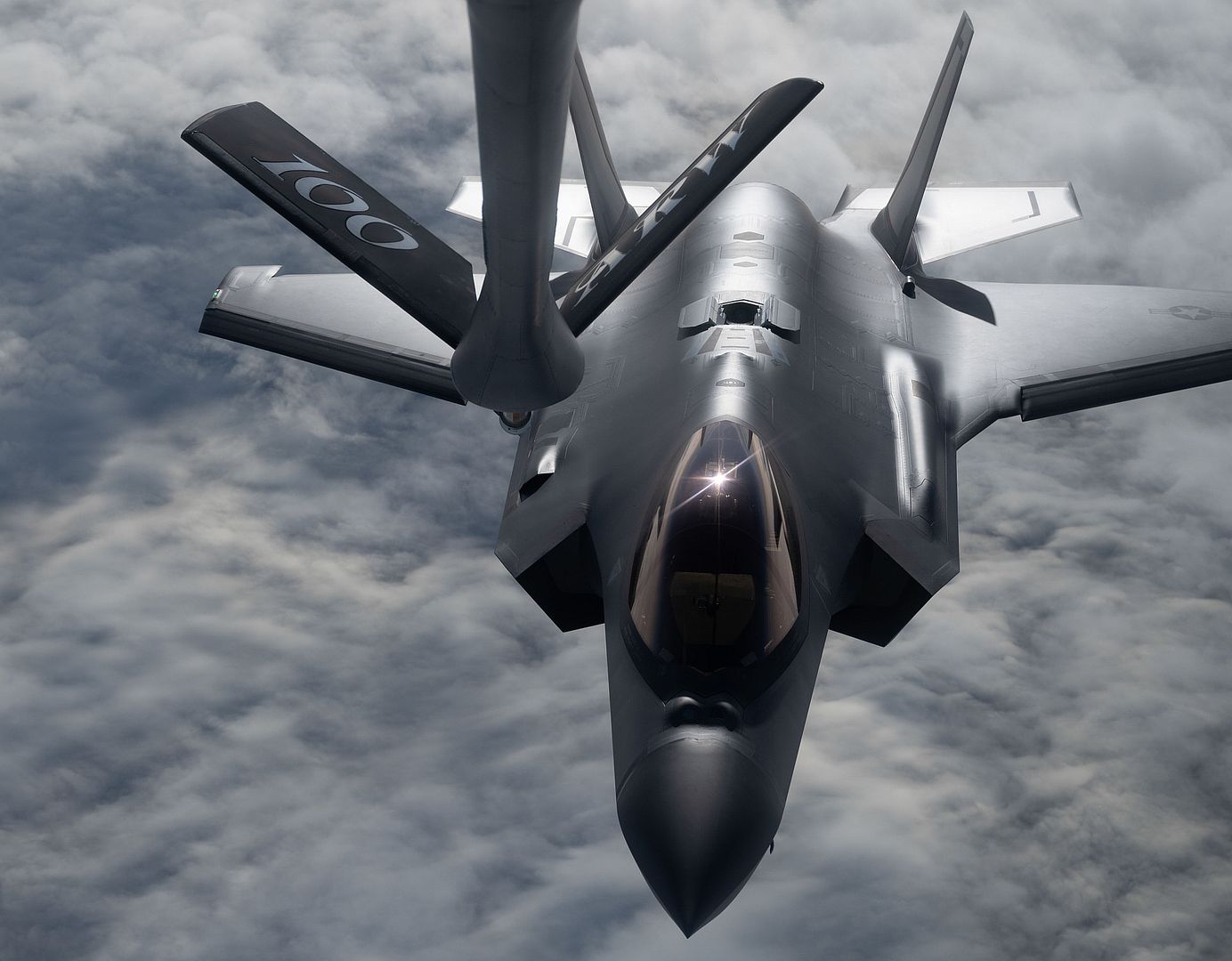
SINGAPORE, Feb. 20, 2024 /PRNewswire/ -- Boeing [NYSE: BA] and Thai Airways announced today the flagship carrier placed an order for 45 787 Dreamliners as the airline looks to modernize and grow its widebody fleet and international network. Thai Airways selected the 787-9 to support its long-term strategy to renew and expand its fleet with more efficient jets, as well as open new routes to support high demand for air travel across Southeast Asia.
"To accomplish our company's and the national carbon neutral goals by 2050, the 45 new Boeing 787 Dreamliners will be equipped with GEnx engines, which are known for their cutting-edge technology and reduced environmental impact," said Chai Eamsiri, Thai Airways CEO. "Furthermore, we are confident that the acquisition of the 787 Dreamliners will ultimately benefit our customers and support the growth of our country's economy."
Thai Airways flies widebody jets ─ including 777s and 787s ─ to nearly 60 domestic and international destinations, including the Middle East, Asia and Europe. With more 787-9s in their fleet, the airline will operate more efficiently, as the Dreamliner family reduces fuel use and emissions by up to 25% compared to the airplanes it replaces.
"Thai Airways' strategic investment in the 787 Dreamliner builds on our long-standing partnership and signifies the airline's commitment to operate a modern, efficient and flexible fleet," said Brad McMullen, Boeing senior vice president of Commercial Sales and Marketing. "This order will support Thai Airways' ability to meet demand, foster tourism and trade, and create further opportunities for this carrier."
The order, which was finalized in December 2023, was listed as unidentified on Boeing's Orders & Deliveries website. Boeing's 2023 Commercial Market Outlook for Southeast Asia projects that the region's widebody fleet will see a three-fold increase over 20 years, with growing demand for nearly 800 airplanes including passenger jets such as Boeing's 787 Dreamliner family and 777X, as well as freighter models.
At 20 feet (6 meters) longer than the 787-8, the 787-9 will enable Thai Airways to fly nearly 20% more passengers farther and build on routes first opened by the 787-8. Since revenue service began in 2011, the 787 family has launched more than 390 new nonstop routes around the world.
Boeing's partnership with Thai Airways and support of the country's aviation industry span more than 60 years. Boeing's presence in Thailand includes offices in Bangkok and support for important causes including STEM education, programs for people with disabilities and sustainable livelihood through permaculture methods.
As a leading global aerospace company, Boeing develops, manufactures and services commercial airplanes, defense products and space systems for customers in more than 150 countries. As a top U.S. exporter, the company leverages the talents of a global supplier base to advance economic opportunity, sustainability and community impact. Boeing's diverse team is committed to innovating for the future, leading with sustainability, and cultivating a culture based on the company's core values of safety, quality and integrity. Join our team and find your purpose at boeing.com/careers.
SINGAPORE, Feb. 20, 2024 /PRNewswire/ -- Boeing [NYSE: BA] and Royal Brunei Airlines today announced the airline's purchase of four 787 Dreamliners to renew its widebody fleet. Royal Brunei Airlines' selection of the 787-9 supports the airline's long-term growth strategy, sustainability goals and focus on passenger comfort.
"The forthcoming arrival of the 787-9 Dreamliner symbolizes a bold step forward in our ongoing journey toward innovation and excellence," said Sabirin bin Haji Abdul Hamid, CEO of Royal Brunei Airlines. "Royal Brunei Airlines has been operating the 787-8 for the last 10 years and this order will ensure we continue with a product that our customers have come to enjoy. In our constant effort to offer unparalleled service matched with the highest safety standards to our guests, the new fleet will allow us the potential to tap into new growth areas, strengthening our market appeal and enabling us to provide a superior travel experience to our guests."
Continue Reading
Royal Brunei Airlines was the first Southeast Asian carrier to fly the 787 Dreamliner over a decade ago. With this 787-9 order, which was finalized in February and will be posted on Boeing's Orders & Deliveries, the airline can fly more passengers and cargo farther while operating more efficiently.
"By renewing its investment in the 787 Dreamliner, Royal Brunei Airlines will continue to connect Brunei with the world while offering the carrier's signature service and comfort to passengers," said Brad McMullen, Boeing senior vice president of Commercial Sales and Marketing. "The 787-9 will deliver the versatility, efficiency and range that Royal Brunei Airlines desires to pursue increasing air travel and tourism opportunities."
Royal Brunei Airlines currently operates five 787-8s, serving destinations in Asia, Australia, the Middle East and the United Kingdom. The 787-9, which can carry nearly 20% more passengers than the 787-8 and fly 14,010 km (7,565 nautical miles), will support the carrier's growing capacity needs on these medium- and long-haul routes.
Boeing's 2023 Commercial Market Outlook forecasts 6.9% annual fleet growth and nearly 4,300 airplanes will be delivered in Southeast Asia over the next 20 years. Royal Brunei Airlines' latest 787 order highlights growing widebody demand in Southeast Asia.
Enhanced comfort features of the 787 family include air that is more humid and pressurized at a lower cabin altitude, as well as technology that counters turbulence. The 787 Dreamliner family also reduces fuel use and emissions by up to 25% compared to the airplanes it replaces.
As a leading global aerospace company, Boeing develops, manufactures and services commercial airplanes, defense products and space systems for customers in more than 150 countries. As a top U.S. exporter, the company leverages the talents of a global supplier base to advance economic opportunity, sustainability and community impact. Boeing's diverse team is committed to innovating for the future, leading with sustainability, and cultivating a culture based on the company's core values of safety, quality and integrity. Join our team and find your purpose at boeing.com/careers.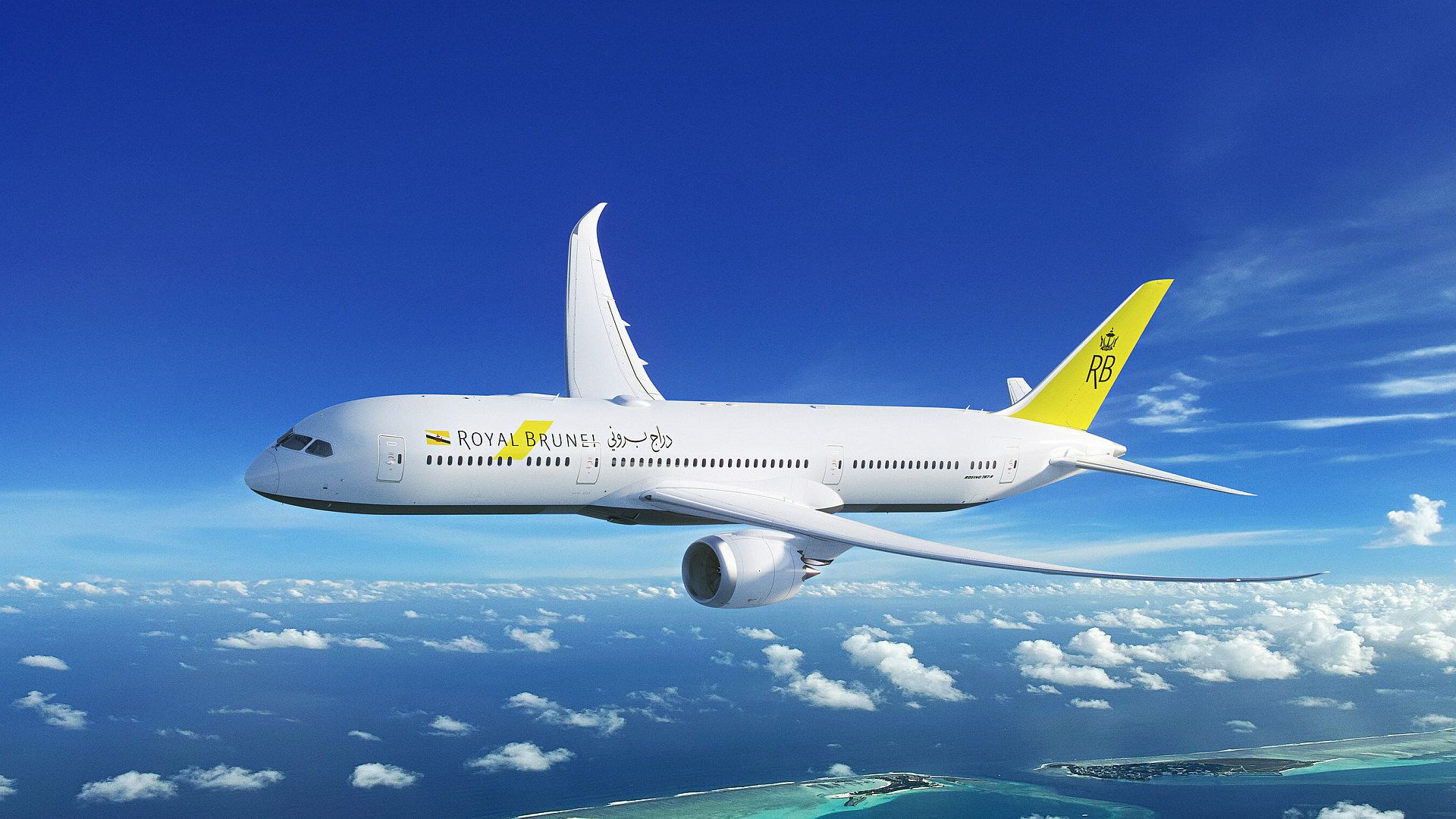
Herndon, USA/Mirabel, Canada, 20 February 2024 – Breeze Airways has disclosed an order for 10 additional A220-300 aircraft, bringing the airline’s total firm order for the aircraft type to 90, making Breeze the third largest customer worldwide for the A220.
“Thanks to its world class performance capabilities, the A220 is the perfect aircraft to help Breeze achieve its goal to provide nonstop service between underserved routes across the United States,” said Benoît de Saint-Exupéry, EVP Sales, Commercial Aircraft, Airbus. “The aircraft offers efficient operations and an outstanding passenger experience, all while operating with the world's lowest small single-aisle carbon footprint and a lower noise footprint in the communities where it flies. This additional order from Breeze is a strong endorsement for the value and opportunities offered by this latest generation aircraft.”
In addition to its positive cabin experience, the aircraft plays an important role in helping decrease airline operating costs and environmental impact. The aircraft can fly non-stop up to 3,600 nautical miles or 6,700 kilometres. Offering 25% lower fuel burn and CO2 emissions per seat compared to previous generation aircraft, the A220 is the only aircraft purpose-built for the 100-150 seat market. Combining state-of-the-art aerodynamics, advanced materials and Pratt & Whitney’s latest-generation GTF™ engines, the A220 brings customers a 50% reduced noise footprint when compared to previous generation aircraft and around 40% lower NOx emissions than industry standards. As with all Airbus aircraft, the A220 is already able to operate with up to 50% Sustainable Aviation Fuel (SAF). Airbus aims for all its aircraft to be capable of operating with up to 100% SAF by 2030.
Breeze took delivery of its first Airbus A220 in December 2021 and is operating 20 aircraft (as of end January 2024) throughout the United States. Breeze also announced it will be using an all-A220 fleet for its commercial operations by the end of 2024.
With more than 300 A220s delivered to 20 airlines operating on five continents including the recent addition of Oceania, the A220 is the optimal aircraft to offer operational flexibility for both regional as well as long-distance routes. To date, more than 100 million passengers have flown on the A220. The fleet is currently flying on more than 1,350 routes and more than 400 destinations worldwide. As of the end of January 2024, around 30 customers have ordered more than 900 A220 aircraft - confirming its leading position in the small single-aisle market.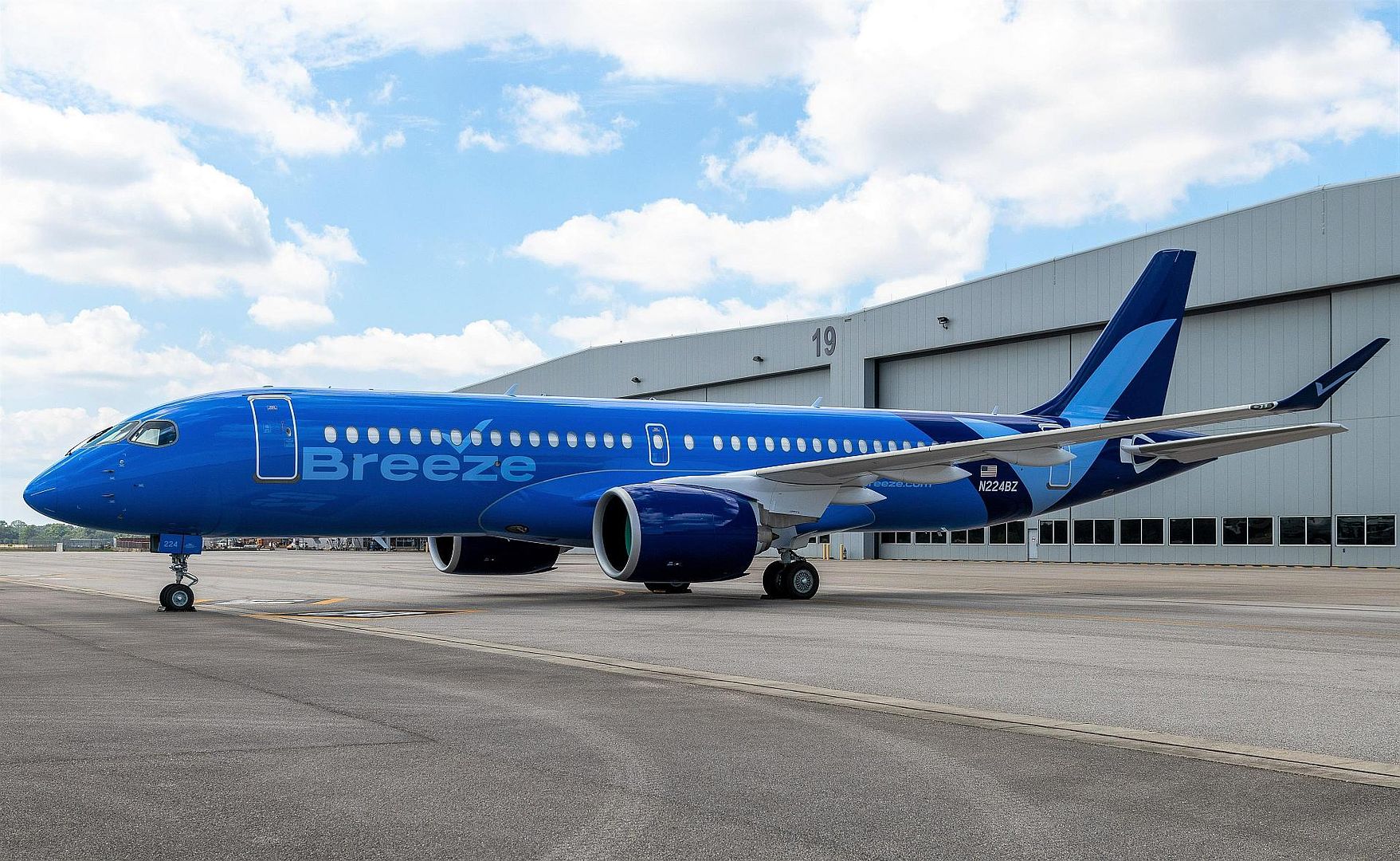
F-35B Lightning jets have embarked on HMS Prince of Wales ready to join other NATO allies for Exercise Steadfast Defender, one of the largest NATO exercises in decades.
The F-35s, of joint RAF and Royal Navy 617 Squadron ‘The Dambusters’, arrived on the aircraft carrier from their base RAF Marham.
(Photos courtesy of the RAF)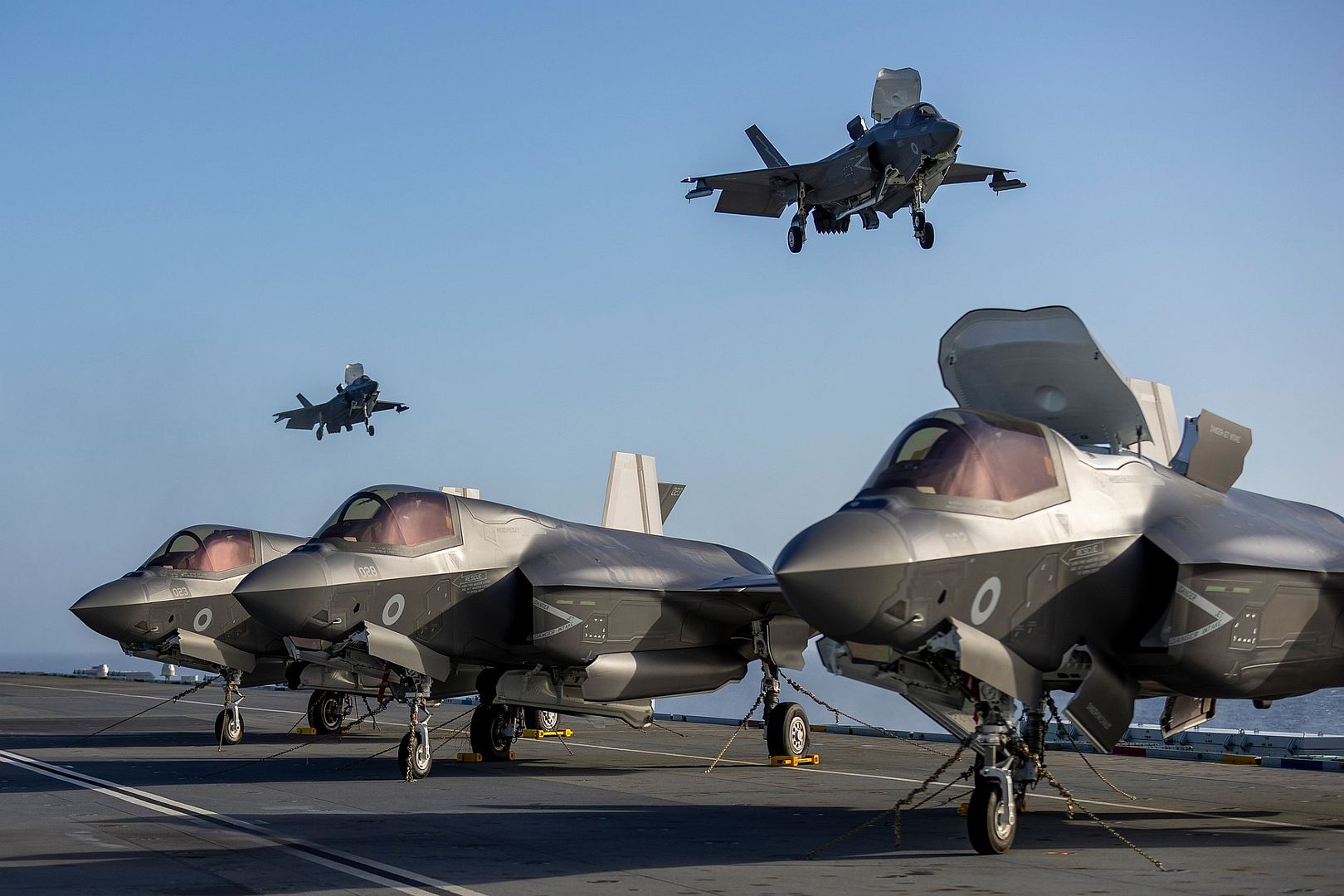

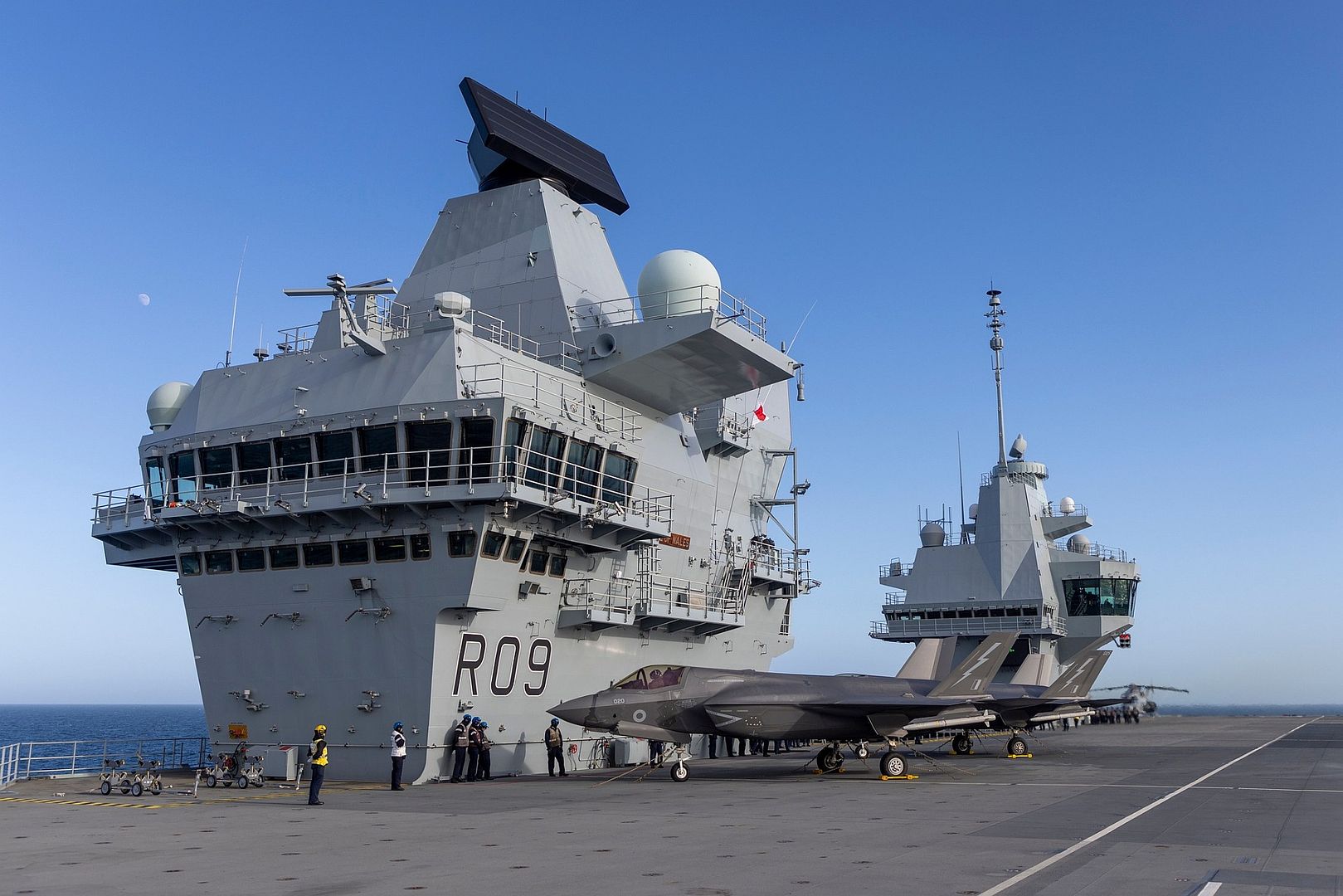
-
1 year agoWed Feb 21 2024, 09:40pmDuggy
 Main Admin02.21.2024.
Main Admin02.21.2024.
The diamond pilots assigned to the U.S. Navy Flight Demonstration Squadron, the Blue Angels, takeoff for a training flight over Naval Air Facility (NAF) El Centro. The Blue Angels are currently conducting winter training at NAF El Centro, California, in preparation for the upcoming 2024 air show season. (U.S. Navy photo by Chief Mass Communication Specialist Michael Russell/Released)
Marietta, Ga., Feb. 21, 2024 — Lockheed Martin (NYSE: LMT) delivered the first of four
C-130J-30 Super Hercules tactical airlifters with the Block 8.1 upgrade to the Royal Norwegian Air Force (RNoAF), delivering advanced capabilities and increased Super Hercules interoperability in the Nordic region and across Europe.
The RNoAF operates a fleet of our C-130J-30 tactical airlifters and received its Super Hercules fleet between 2008–2012. Lockheed Martin is installing the Block 8.1 upgrade kit on these aircraft at its site in Greenville, South Carolina. The aircraft was recently ferried from Greenville by a RNoAF crew to Norway, where these Super Hercules are operated by the 335 Squadron Gardermoen Air Station.
“Norway’s C-130J-30 fleet is a national asset with tremendous regional reach and impact, supporting critical missions with NATO, European Union and global Super Hercules partners,” said Danya Trent, vice president of International Programs for the Air Mobility & Maritime Missions line of business at Lockheed Martin. “As security demands increase, the Royal Norwegian Air Force C-130J-30 fleet must always be prepared to support any mission requirement. The Block 8.1 upgrade ensures the Norway’s Super Hercules fleet is mission-ready at any given time, delivering unprecedented reach, protection and connection.”
The Block 8.1 upgrade contains software and hardware expansions that deliver greater global reach, enhanced navigation and additional defensive capabilities, which include:
A new flight management system that complies with CNS/ATM mandates, and includes vertical navigation with coupled auto throttle
Civil GPS
Ground power modes
Updated Identification Friend or Foe
CNS/ATM Data Link
Enhanced inter-communication system
Enhanced approach and landing systems
Expanded diagnostics
Improved PA system
Additional covert lighting
IAMSAR compliant search pattern programming
The C-130J Super Hercules Joint User Group (JUG) drives the ongoing Block Upgrade program and is the most mature tactical airlift operators’ group in the world. As a JUG member, Norway shapes and develops the Super Hercules Block Upgrade Program. Block 8.1 is now the standard for all new production model Super Hercules airlifters and operators include/will include: the U.S. Air Force, Marine Corps and Coast Guard, as well as Australia, France, Germany and New Zealand.
Norway’s C-130J-30s are true workhorses, supporting a multitude of tactical mission requirements including personnel and equipment transport, humanitarian operations, aeromedical airlift, Special Operations, cold weather operations and natural disaster relief.
A long-time Hercules operator, the RNoAF has the distinction of being the first Foreign Military Sale for the C-130J Super Hercules program.
The Super Hercules is the worldwide choice in tactical airlift, serving 26 operators in 22 nations. To date, more than 540 C-130Js have been delivered and certified by over 20 airworthiness authorities, with the Super Hercules global fleet reaching almost 3 million flight hours —
to include hours flown by RNoAF C-130J-30 crews.
Defining advantages separating C-130J-30s from other medium jet cargo transports include the best short-field takeoff and landing performance, lower fuel consumption, reduced carbon footprint, increased range, the most pallet and passenger capacity, and superior survivability.
More information about the C-130J Super Hercules is available at lockheedmartin.com/C130.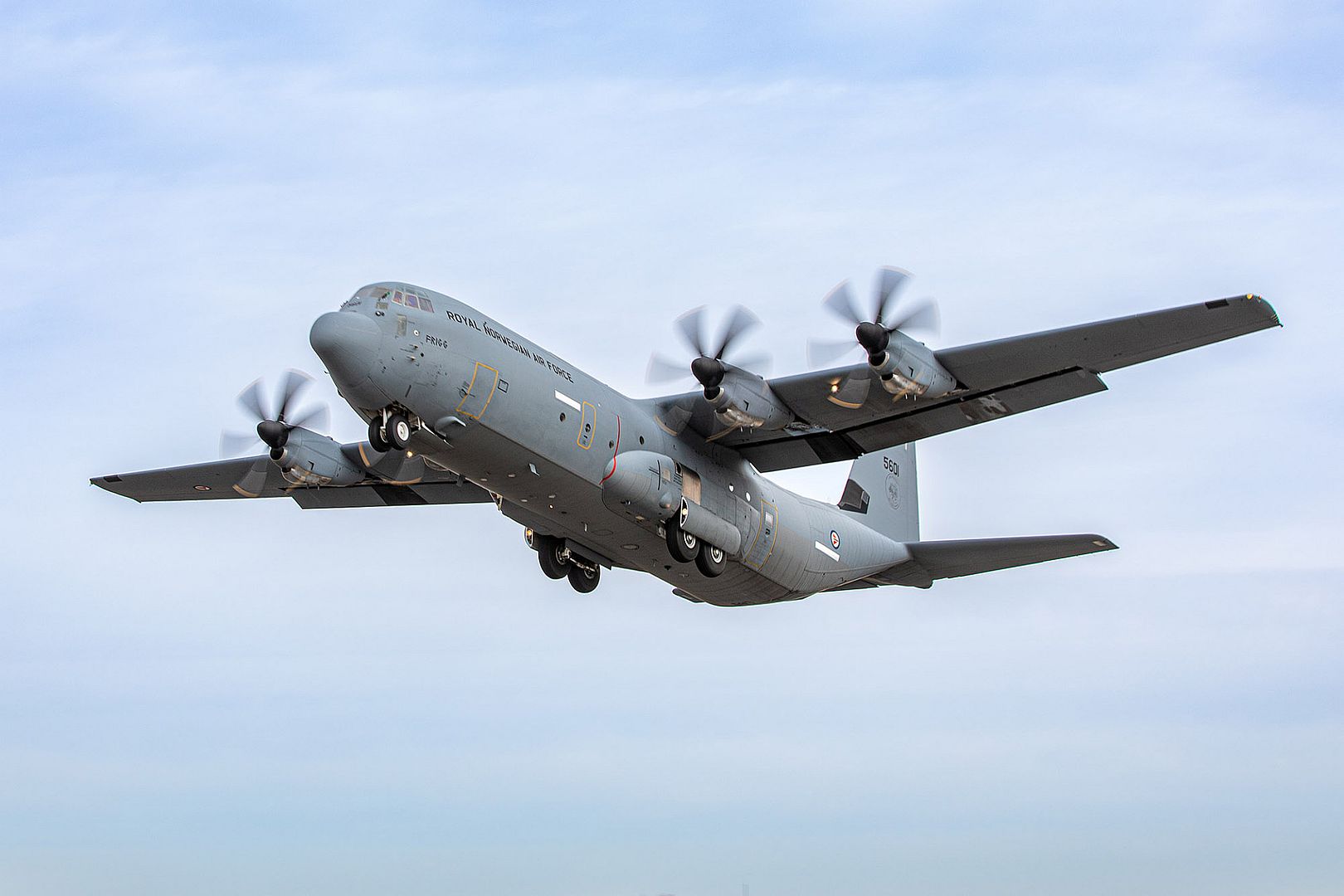
Singapore, Australian commercial aircraft operator Microflite has ordered a second five-bladed H145 to support its growing training, commercial, utility, fire observation and rescue operations.
Microflite is Airbus’ largest civil helicopter customer in Australia, currently operating an Airbus fleet of 20 rotorcraft ranging from single-engine H120, H125 and H130, to twin-engine H135 and H145. The operator also has on order an H135 and an H145, with the latter being the fifth Helionix equipped helicopter in its fleet.
“The H145 has proven to be an excellent workhorse for our multi-mission operations. With the second five-bladed H145 joining the fleet in the coming months, we can’t wait to see these versatile helicopters making a positive impact to our expanding training and commercial portfolio,” said Jonathan Booth, Chief Executive Officer, Microflite Helicopter Services.
“Microflite has been a strong Airbus operator and we are honoured by its continued trust in our helicopters as it ventures into new missions including military training and grows its local footprint and capabilities,” said Clinton Watt, Vice President, Sales and Marketing of Airbus Australia Pacific.
Managing an impressive Airbus fleet for various missions, Microflite is an Airbus appointed maintenance and pilot training centre. The Victoria-based operator offers a suite of type-rated training for the entire suite of single-engine and light twin helicopters.
Additionally, Microflite is working closely with Airbus to advance mutual training ambitions through the introduction of a Full Flight Simulator in Australia, in the next two years.
There are more than 1,675 H145 family helicopters in service, accumulating more than 7.6 million flight hours. Powered by two Safran Arriel 2E engines, the H145 is equipped with full authority digital engine control (FADEC) and the Helionix digital avionics suite. It includes a high performance 4-axis autopilot, increasing safety and reducing pilot workload. Its particularly low acoustic footprint makes the H145 the quietest helicopter in its class, while its CO2 emissions are the lowest amongst its competitors.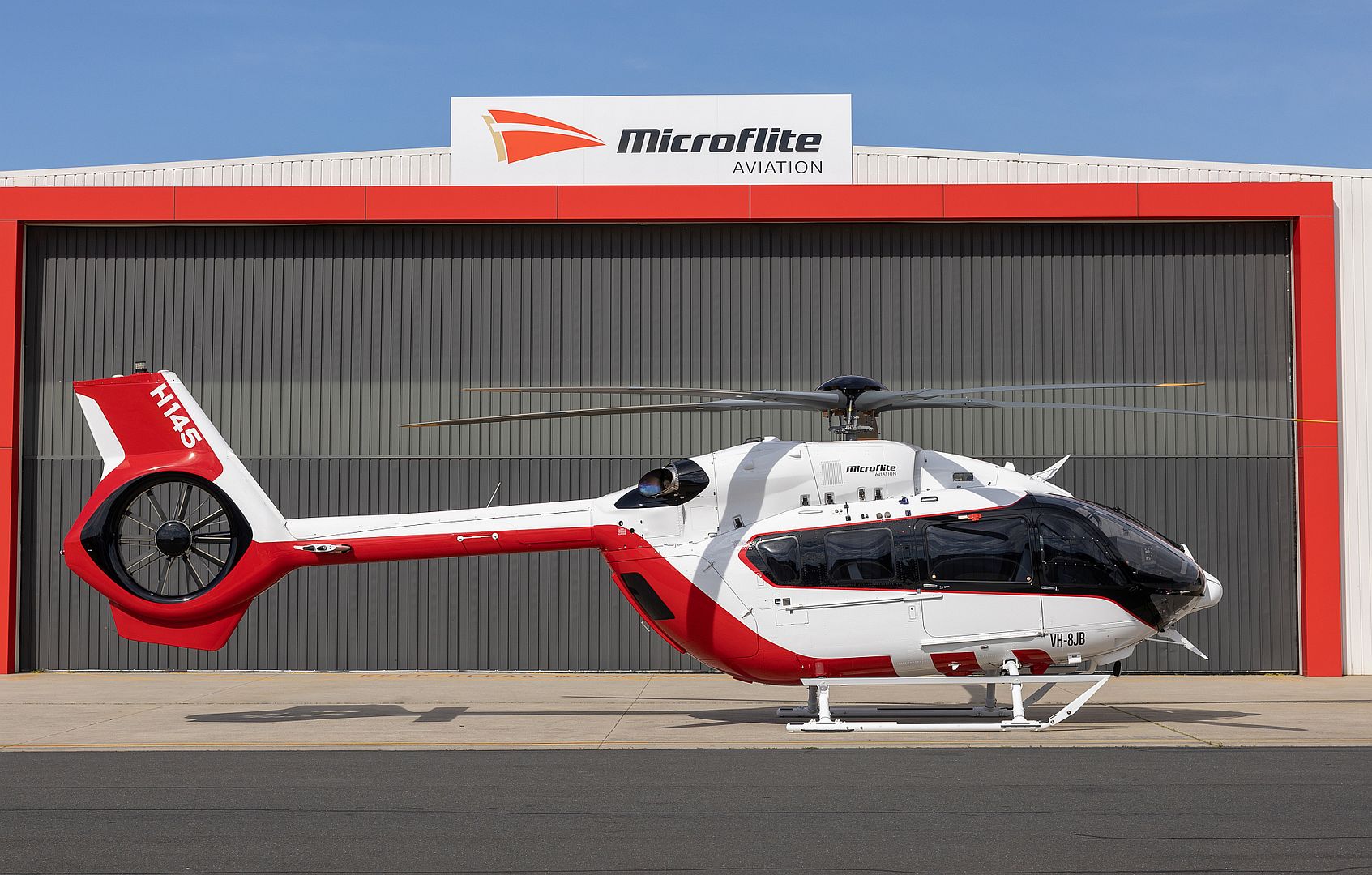
Singapore, 21 February 2024 – STARLUX Airlines of Taiwan has placed a firm order for five all-new A350F freighters and three more A330neo widebody aircraft. The agreement was signed at the Singapore Airshow by KW Chang, Chairman of STARLUX Airlines and Christian Scherer, CEO of the Commercial Aircraft business of Airbus.
“STARLUX Airlines has continuously nurtured the cargo market since its inception, capitalising on the strategic advantages offered by Taiwan’s geographical location,” said STARLUX CEO Glenn Chai.
“With this order, STARLUX will become the first Taiwanese airline to operate the next-generation A350F widebody freighter. In an era of climate change, the A350F has unbeatable efficiency in terms of fuel burn, CO2 emissions, and economics, offering significant energy-saving and carbon reduction benefits. It not only meets customer requirements for carbon reduction but also aligns with STARLUX’s ESG plan to achieve zero emissions by 2050. Additionally, the three new A330neos will strengthen our fleet advantage and provide greater flexibility for passenger operations.”
“We love working with STARLUX Airlines in building and strengthening its fleet,” said Benoît de Saint-Exupéry, Airbus EVP Sales, Commercial Aircraft. “Operating both the latest generation Airbus single aisle and widebody aircraft brings the airline enormous benefits. It significantly reduces fuel consumption and carbon emission and offers unrivalled levels of technical commonality, benefits in maintenance and training. The A350F, the only new generation large freighter, will fit seamlessly into this all-Airbus fleet and enable STARLUX Airlines to compete effectively with the leading players in key cargo markets.”
STARLUX Airlines operates an all-Airbus passenger fleet that already includes the A350-900, A330neo and A321neo. The A350F will be operated by STARLUX Cargo on some of the world’s busiest cargo routes.
Currently under development, the A350F can carry a payload of up to 111 tonnes and can fly up to 4,700 nautical miles / 8,700 kilometres at significantly lower cost than any other freighter available today. The A350F will enable STARLUX Cargo to serve all heavy cargo markets around the world.
Powered by the latest Rolls-Royce Trent-XWB97 engines, the aircraft will bring a reduction in fuel consumption and carbon emissions of up to 40% when compared with the older 747F and is at least 20% more efficient than its competitor.
The A350F features the largest main deck cargo door in the industry, with fuselage length and capacity optimised around the industry’s standard pallets and containers. Over 70% of the airframe is made of advanced materials, resulting in a 46 tonne lighter take-off weight than the competing derivative. The A350F is also the only freighter aircraft that will fully meet ICAO’s enhanced CO₂ emissions standards, coming into effect in 2027.
Meanwhile, the additional order for the A330neo will see STARLUX Airlines continue to build one of the most modern and efficient passenger fleets, offering the highest levels of in-flight comfort. The incremental order will boost its A330neo fleet from four to seven, with the aircraft featuring a premium two-class cabin comprising 28 business class seats and 269 economy class seats.
Airbus widebody aircraft are especially popular with airlines in the Asia-Pacific, with nearly 900 in-service and 190 to be delivered.
At the end of January, the latest generation A350 Family had won over 1,200 orders from 57 customers worldwide, including 50 for the A350F from nine leading cargo airlines. In the mid-size category, the A330neo Family continues to gain momentum, with nearly 300 firm orders from 28 customers.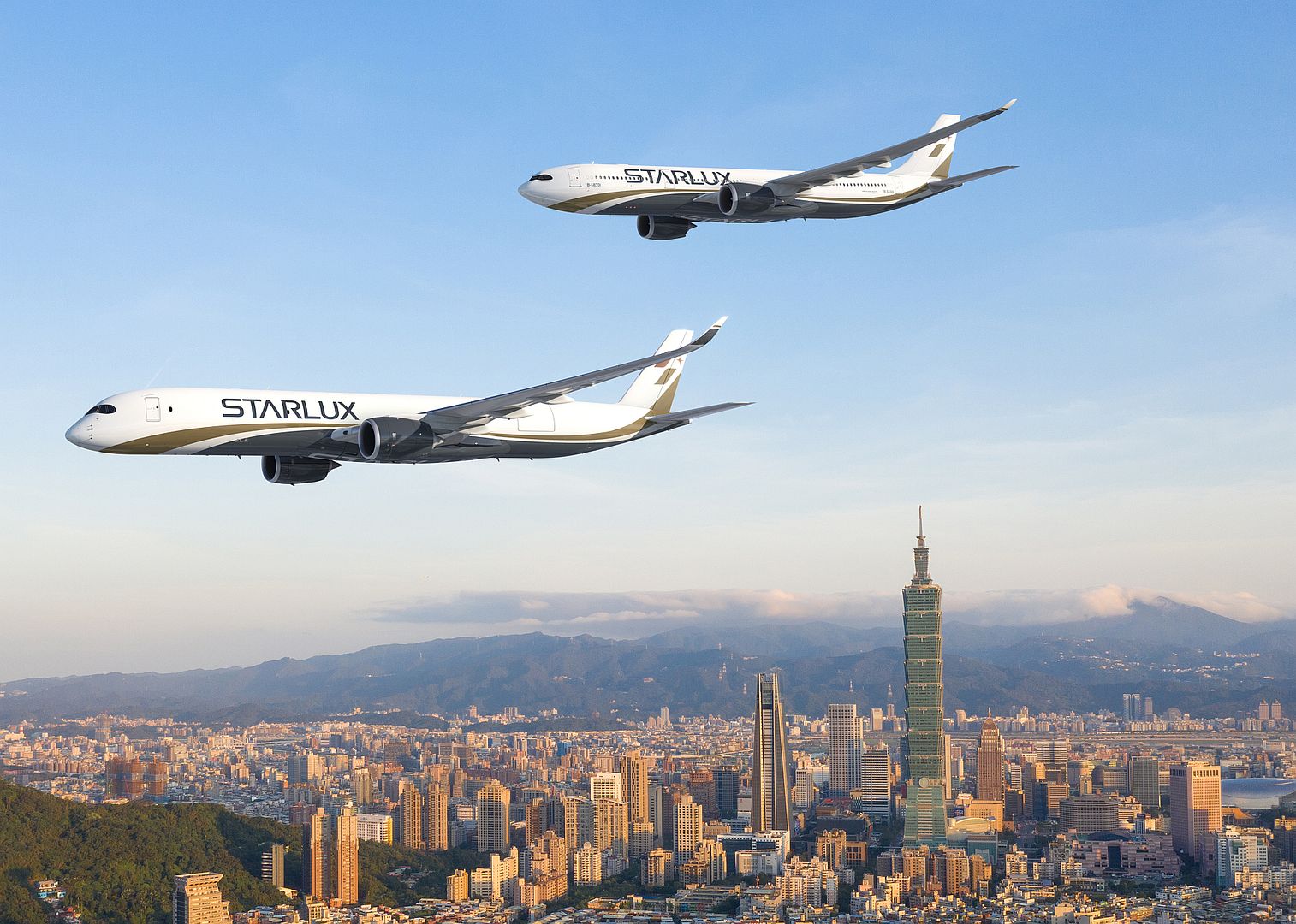
-
1 year agoThu Feb 22 2024, 08:47pmDuggy
 Main AdminThe incoming U.S. Air Force F-16 Viper Demonstration Team pilot and commander takes off at Shaw Air Force Base, Feb. 20, 2024. The team travels across the U.S. and internationally to perform at air shows, enhancing community relations and positively influencing U.S. Air Force recruiting and retention. (U.S. Air Force by Senior Airman Meghan Hutton)
Main AdminThe incoming U.S. Air Force F-16 Viper Demonstration Team pilot and commander takes off at Shaw Air Force Base, Feb. 20, 2024. The team travels across the U.S. and internationally to perform at air shows, enhancing community relations and positively influencing U.S. Air Force recruiting and retention. (U.S. Air Force by Senior Airman Meghan Hutton)
A KC-10 Extender assigned to Travis Air Force Base, Calif., arrives at Soto Cano Air Base, Honduras, Feb. 21, 2024. The aircraft and crews delivered over 24 pallets as part of the Denton Program, a Department of Defense transportation program that moves humanitarian cargo, donated by U.S. based Non-Governmental Organizations (NGOs) to developing nations to ease human suffering. (U.S. Air Force photos by Tech. Sgt. Nick Z. Erwin)
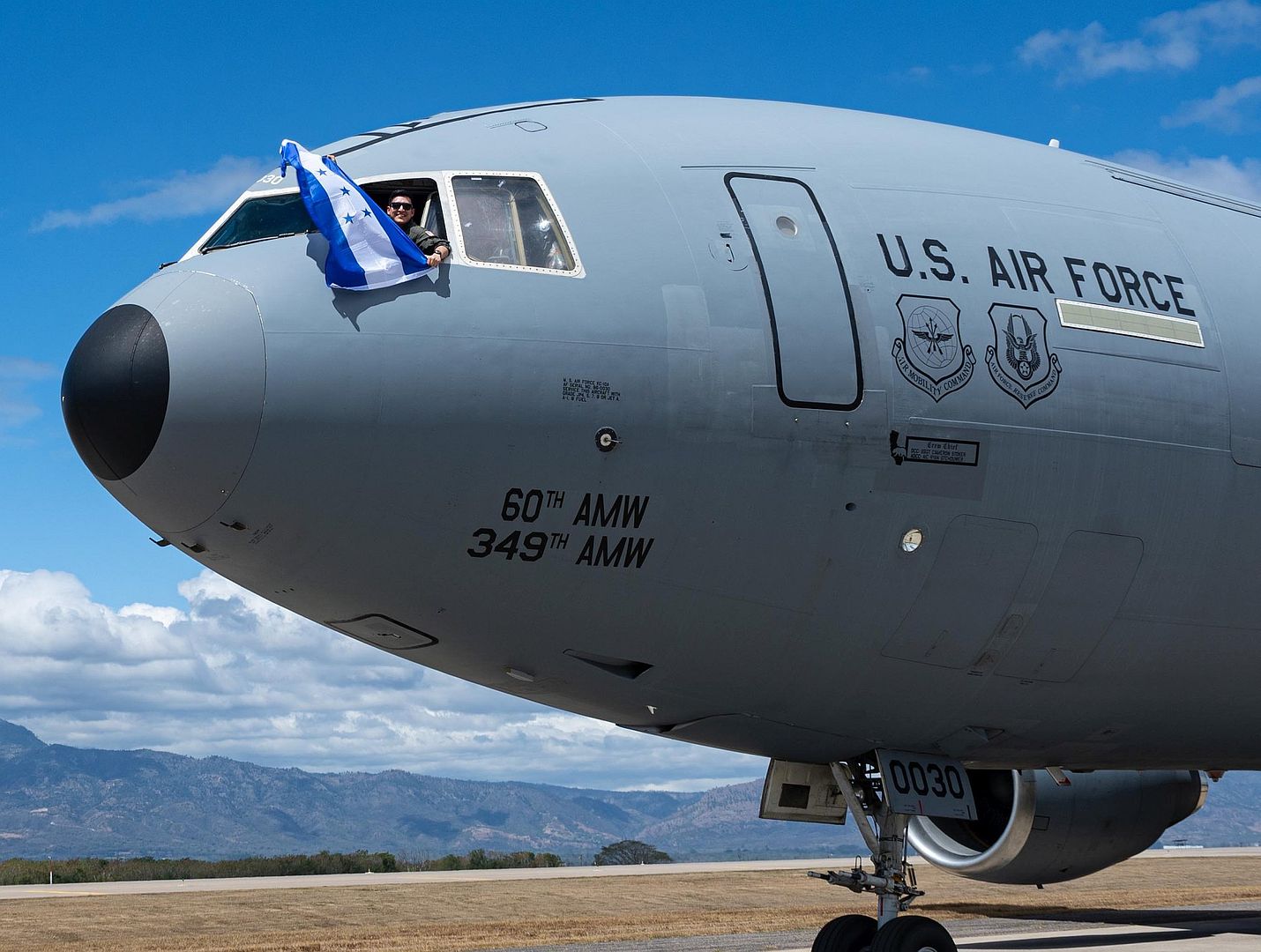
Singapore, 22 February 2024 – Vietjet Air has signed a Memorandum of Understanding (MoU) with Airbus for the purchase of 20 A330-900 widebodies.
When finalised, this will be Vietjet’s first-ever widebody order. The aircraft will be operated on the carrier’s growing long range network, as well as on high capacity regional services. They will replace the carrier’s current fleet of leased A330-300s, as well as providing for network expansion.
Vietjet Chief Executive Officer Dinh Viet Phuong said, "The new A330neo aircraft is a strategic addition to comprehensively modernise Vietjet's fleet, enhancing operational capabilities to support our global flight network expansion plan. Its fuel-efficient new-generation design aligns with our sustainable development strategy and ESG goals, aiming for net-zero emissions by 2050. With the introduction of the A330neo, passengers can look forward to longer-range, well-equipped flights with excellent services at more competitive fares."
“We are excited to work with Vietjet on the next phase of the carrier's expansion,” said Christian Scherer, CEO of the Commercial Aircraft business of Airbus. “The A330neo will enable the airline to achieve the lowest possible operating costs per seat and to continue to offer its customers the best possible value wherever they fly. It will also be the perfect complement to the A321XLRs already on order with the airline, as it spreads its wings to more far flung destinations.”
The A330neo features the award-winning Airspace cabin, which offers passengers a unique passenger experience, high level of comfort, ambience, and design. This includes more individual space, enlarged overhead bins, a new lighting system and access to the latest in-flight entertainment and connectivity systems.
Powered by the latest generation Rolls-Royce Trent 7000 engines, the A330-900 is capable of flying 7,200 nm / 13,300 km non-stop. At the end of January 2024, the A330 Family had accumulated 1,771 firm orders from more than 130 customers worldwide.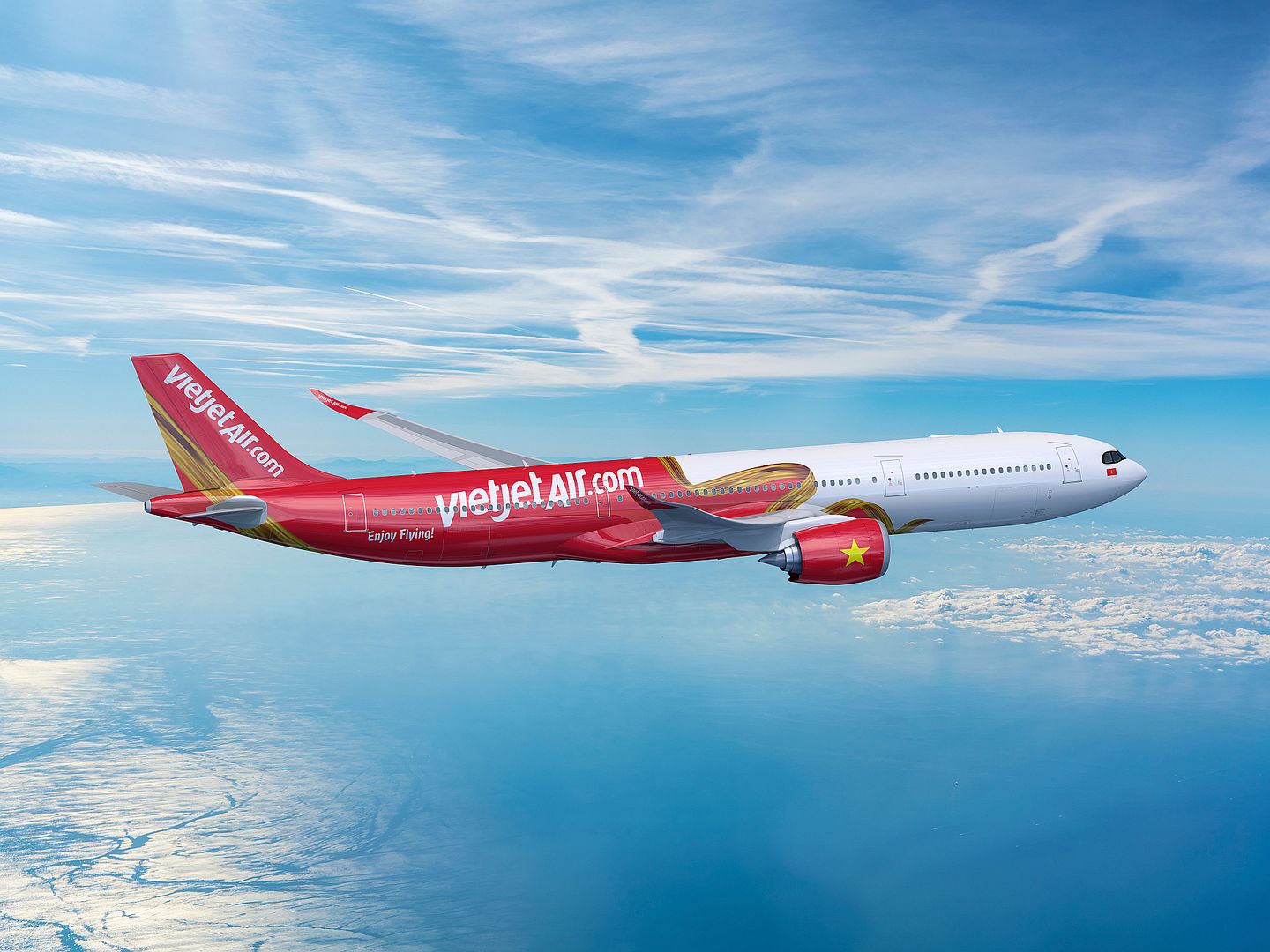
Singapore Airshow (February 20, 2024) - Bell Textron Inc., a Textron Inc. (NYSE:TXT) company, announced the delivery of a highly customized Bell 429 helicopter to Sky Yard Aviation Corporation in the Philippines. The delivery of this aircraft, completed at the end of 2023, brings the total number of Bell 429 helicopters operating in the Philippines to twelve.
This particular Bell 429 has been outfitted to Sky Yard's exact specifications, featuring custom paint and interiors with bespoke interior fittings tailored to meet their private aviation needs. The Bell 429 is Bell's latest light twin helicopter, equipped with a fully integrated glass cockpit for critical flight information at a glance, enhancing situational awareness and safety.
“Throughout the sales process, it was exciting to see the Sky Yard and Bell design teams collaboratively develop a unique aircraft incorporating the owner's tastes and sensibilities that also supported their business and lifestyle needs,” said Sameer Rehman, managing director, Asia Pacific. “The Philippines remains a key growth market for Bell and especially the Bell 429. We are proud to see Philippine corporations recognize the value the Bell 429 brings in terms of safety, reliability and comfort.”
“Bell’s user-friendly approach and long history working in the Philippine rotorcraft industry aided me in seamlessly designing our Bell 429. The Bell 429’s cutting edge technology coupled with Bell’s excellent customer service ensured a smooth process, cumulating in a helicopter that goes beyond expectations,” said Captain Louie Leonardo Ibarra, president, Sky Yard Aviation Corporation.
The Bell 429 is the first helicopter certified through the MSG-3 process, resulting in reduced maintenance costs for operators. It also features a spacious cabin with extra-large side doors, as well as IFR capability for single or dual pilot operations.
With exceptional speed, range, hover performance and enhanced safety margins from its fully integrated glass cockpit and advanced systems, the Bell 429 can be configured for executive/VIP transport, emergency medical services, law enforcement and utility operations. To date, over 450 Bell 429s have been delivered to customers worldwide.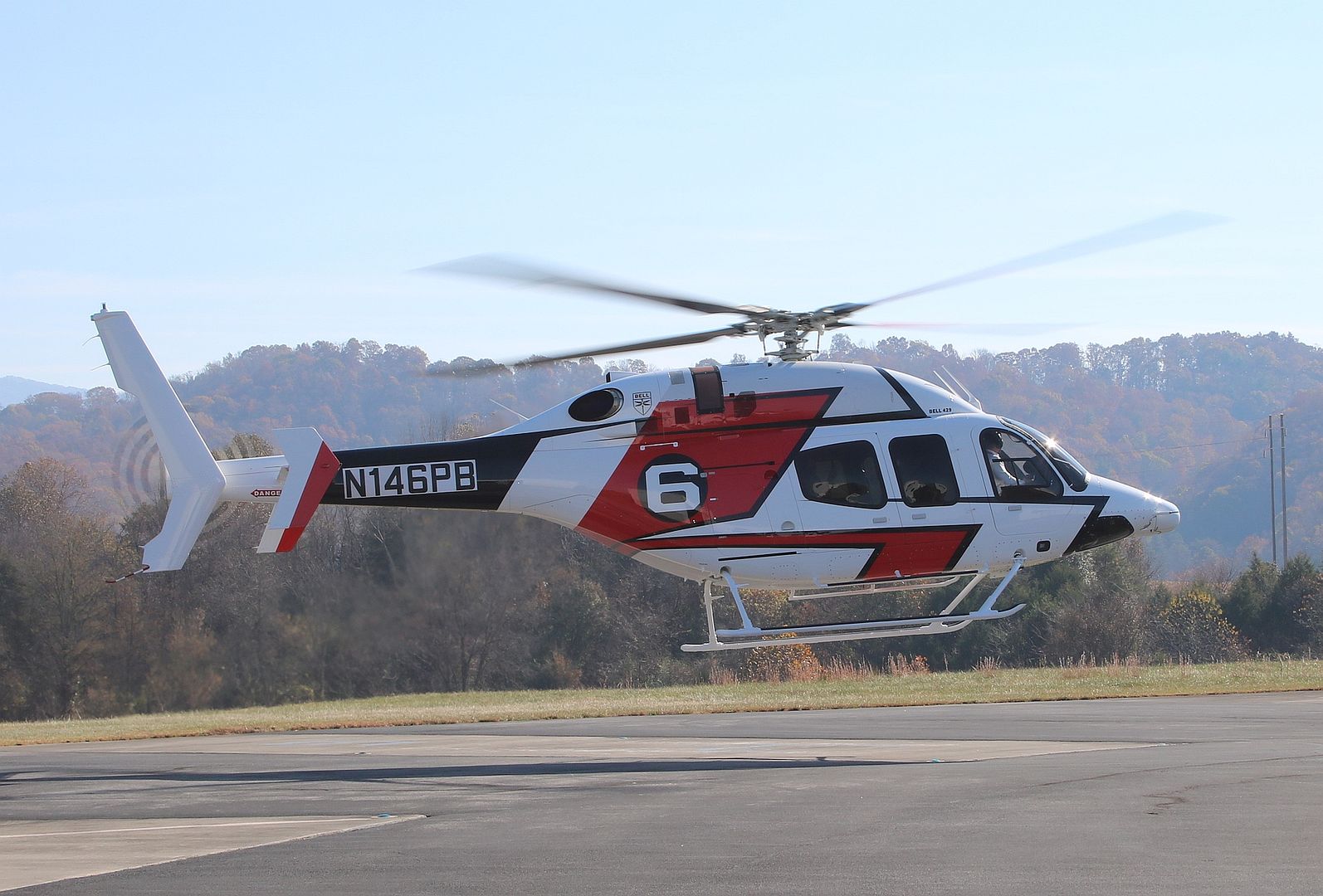
The UK's Carrier Strike Group is beginning to assemble.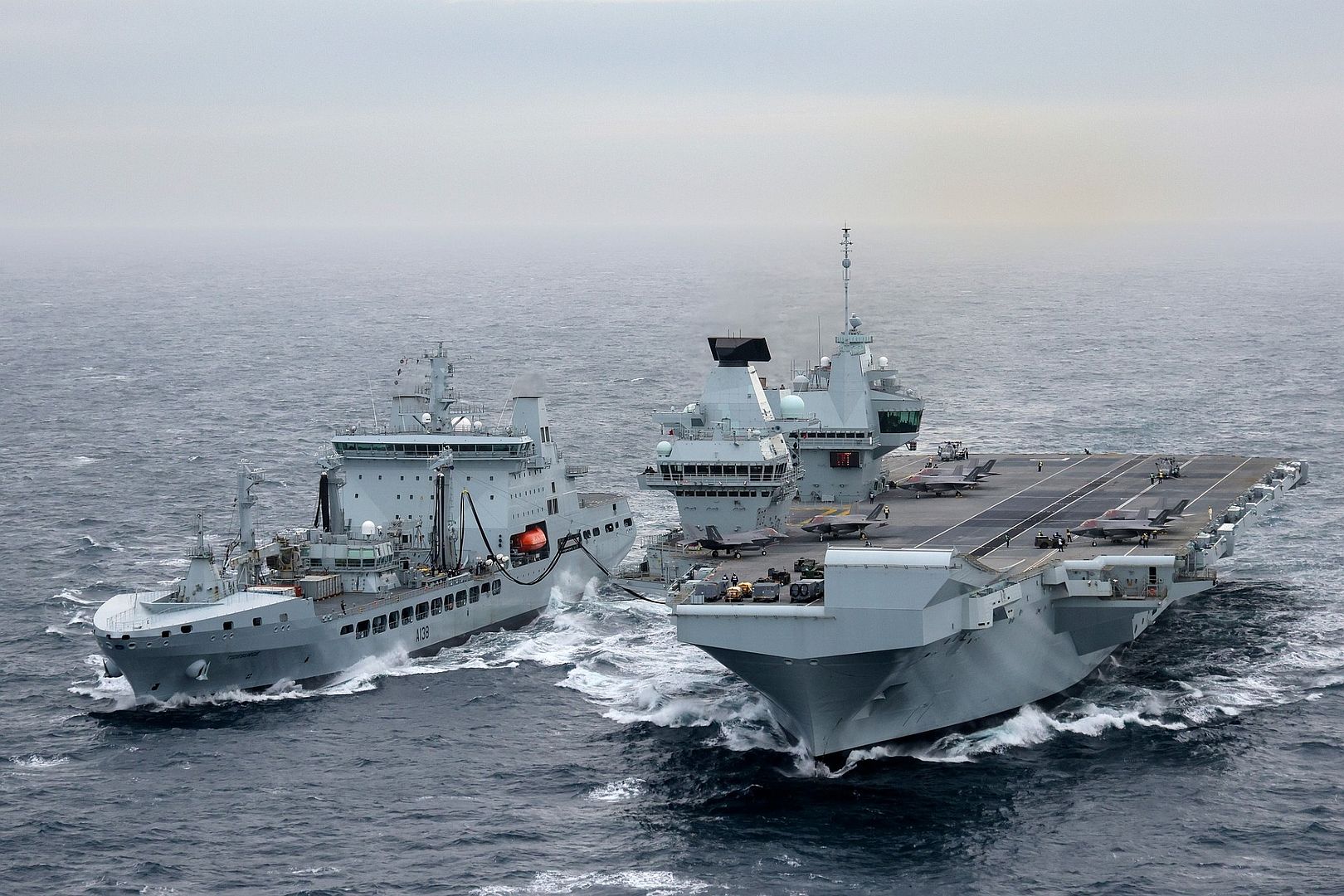
HMS Portland and Royal Fleet Auxiliary tanker RFA Tidesurge have met up with HMS Prince of Wales as she sails north for NATO exercise Steadfast Defender. Submarine hunting Merlin helicopters from RNAS Culdrose-based 820 NAS and Wildcats from 847 NAS have also embarked - joining F-35 stealth fighters from 617 Squadron, 'the Dambusters'.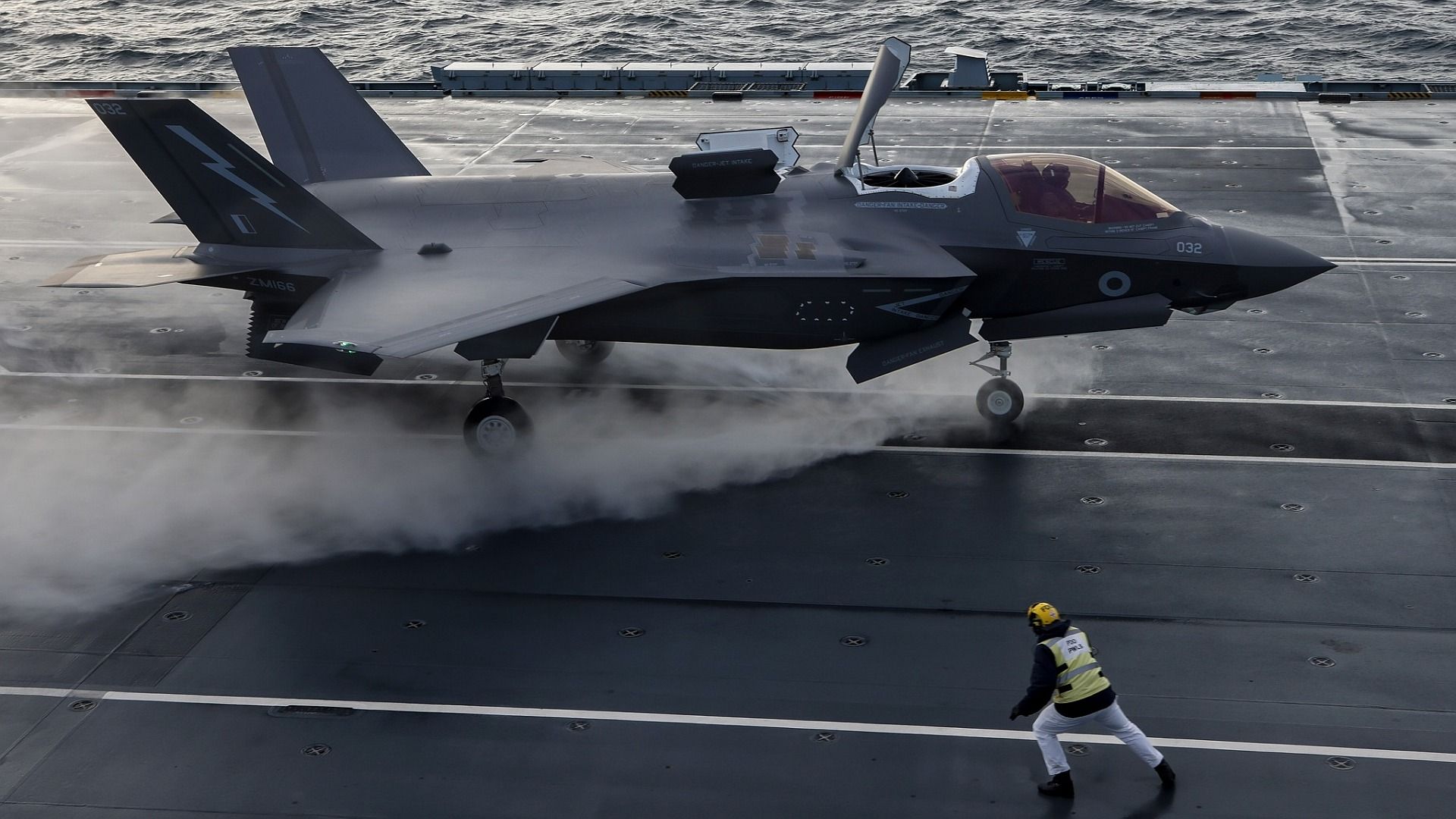
Together, they form one part of the Carrier Strike Group which will take a lead role in the biggest NATO exercises for decades. They will be joined by escorts from other allies and partners as ships, aircraft and personnel come together in the High North and North Atlantic to showcase NATO’s ability to deter enemies and defend allied territory.
(Photos courtesy of the RN)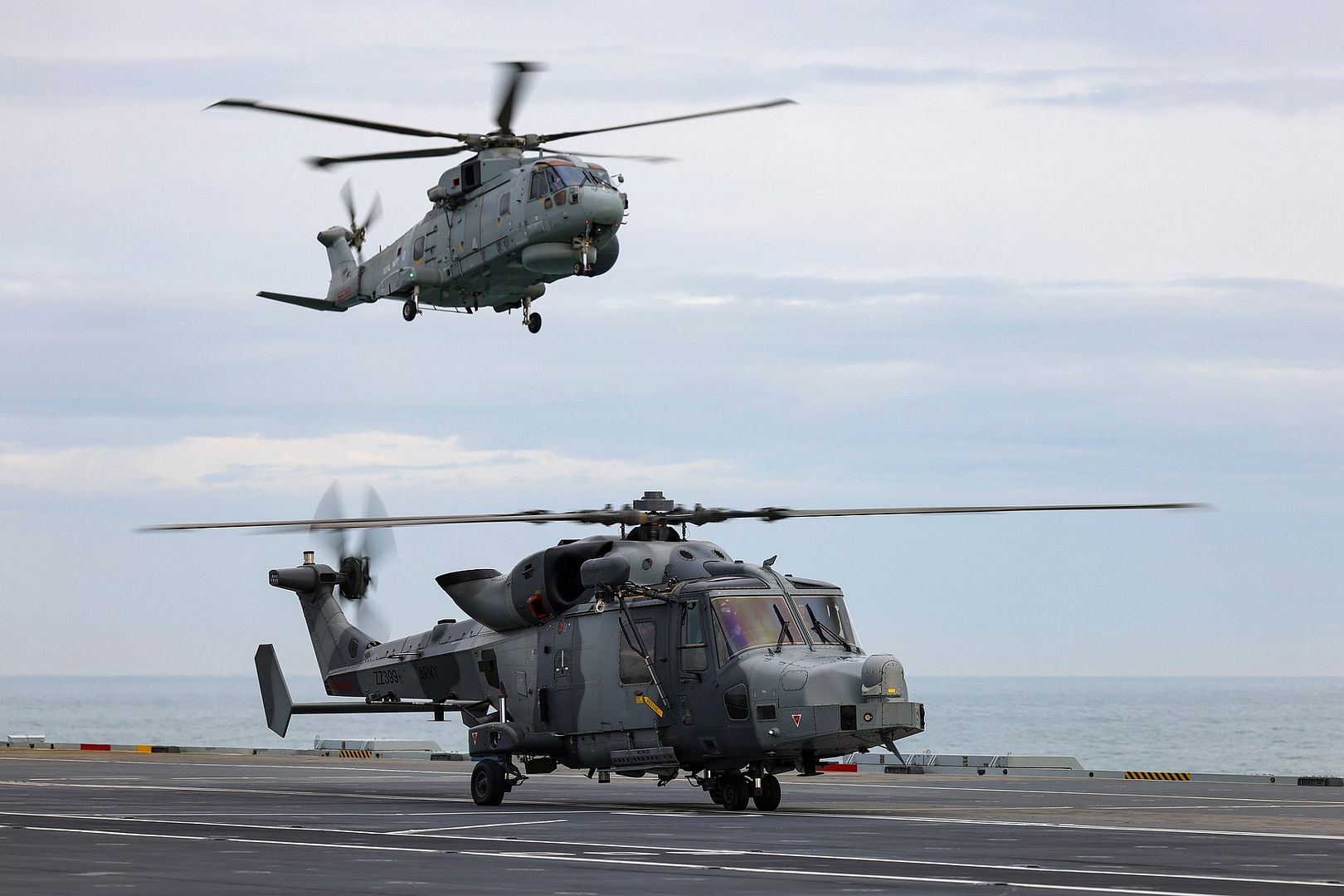
-
1 year agoFri Feb 23 2024, 07:11pmDuggy
 Main AdminU.S. Marines with Marine Fighter Attack Squadron (VMFA) 312, 2nd Marine Aircraft Wing, conduct flightline operations as an F/A-18D Hornet aircraft lands in preparation for Exercise Nordic Response 24 at Andenes, Norway, Feb. 21, 2024. Exercise Nordic Response, formerly known as Cold Response, is a NATO training event conducted every two years to promote military competency in arctic environments and to foster interoperability between the U.S. Marine Corps and allied nations. (U.S. Marine Corps photo by Cpl. Christopher Hernandez)
Main AdminU.S. Marines with Marine Fighter Attack Squadron (VMFA) 312, 2nd Marine Aircraft Wing, conduct flightline operations as an F/A-18D Hornet aircraft lands in preparation for Exercise Nordic Response 24 at Andenes, Norway, Feb. 21, 2024. Exercise Nordic Response, formerly known as Cold Response, is a NATO training event conducted every two years to promote military competency in arctic environments and to foster interoperability between the U.S. Marine Corps and allied nations. (U.S. Marine Corps photo by Cpl. Christopher Hernandez)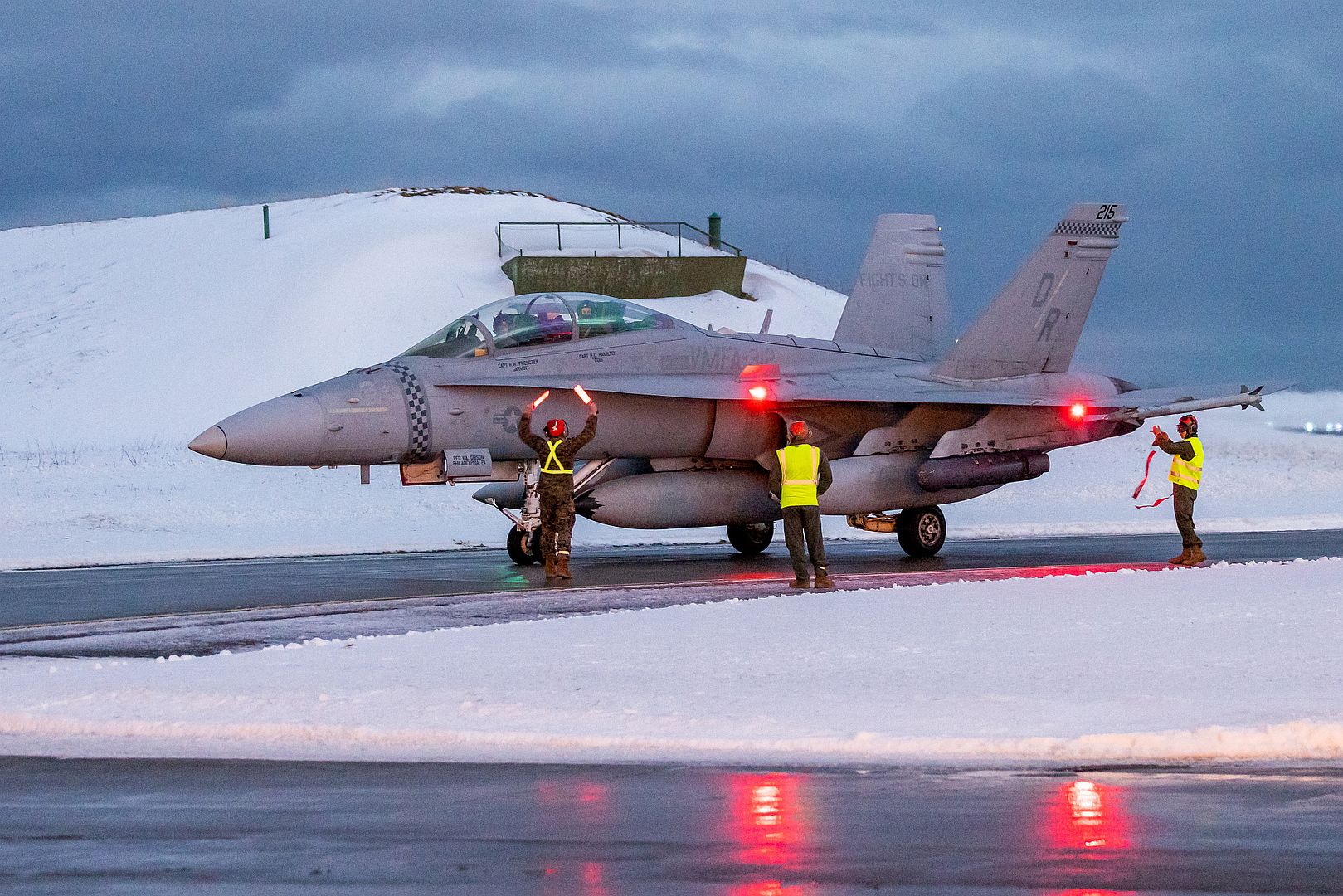
A U.S. Marine Corps F/A-18C Hornet aircraft, assigned to Marine Fighter Attack Squadron (VMFA) 312, 2nd Marine Aircraft Wing, taxis on a runway after landing in preparation for Exercise Nordic Response 24 in Andenes, Norway, Feb. 21, 2024. Exercise Nordic Response, formerly known as Cold Response, is a NATO training event conducted every two years to promote military competency in arctic environments and to foster interoperability between the U.S. Marine Corps and allied nations. (U.S. Marine Corps photo by 2nd Lt. Duncan Stoner)_312_2nd_Marine_Aircraft_Wing_taxis_on_a_runway_after_landing_in_preparation_for_Exercise_Nordic_Response_24_in_Andenes_Norway_Feb._21_2024..jpg?width=1920&height=1080&fit=bounds)
Royal Canadian Air Force Capt. Nicholas Kortbeek; a native of Calgary, Canada, and an F/A-18 Hornet pilot with Marine Fighter Attack Squadron (VMFA) 312, 2nd Marine Aircraft Wing; taxis an F/A-18C Hornet aircraft after landing in preparation for Exercise Nordic Response 24 at Andenes, Norway, Feb. 21, 2024. Exercise Nordic Response, formerly known as Cold Response, is a NATO training event conducted every two years to promote military competency in arctic environments and to foster interoperability between the U.S. Marine Corps and allied nations. (U.S. Marine Corps photo by Cpl. Christopher Hernandez)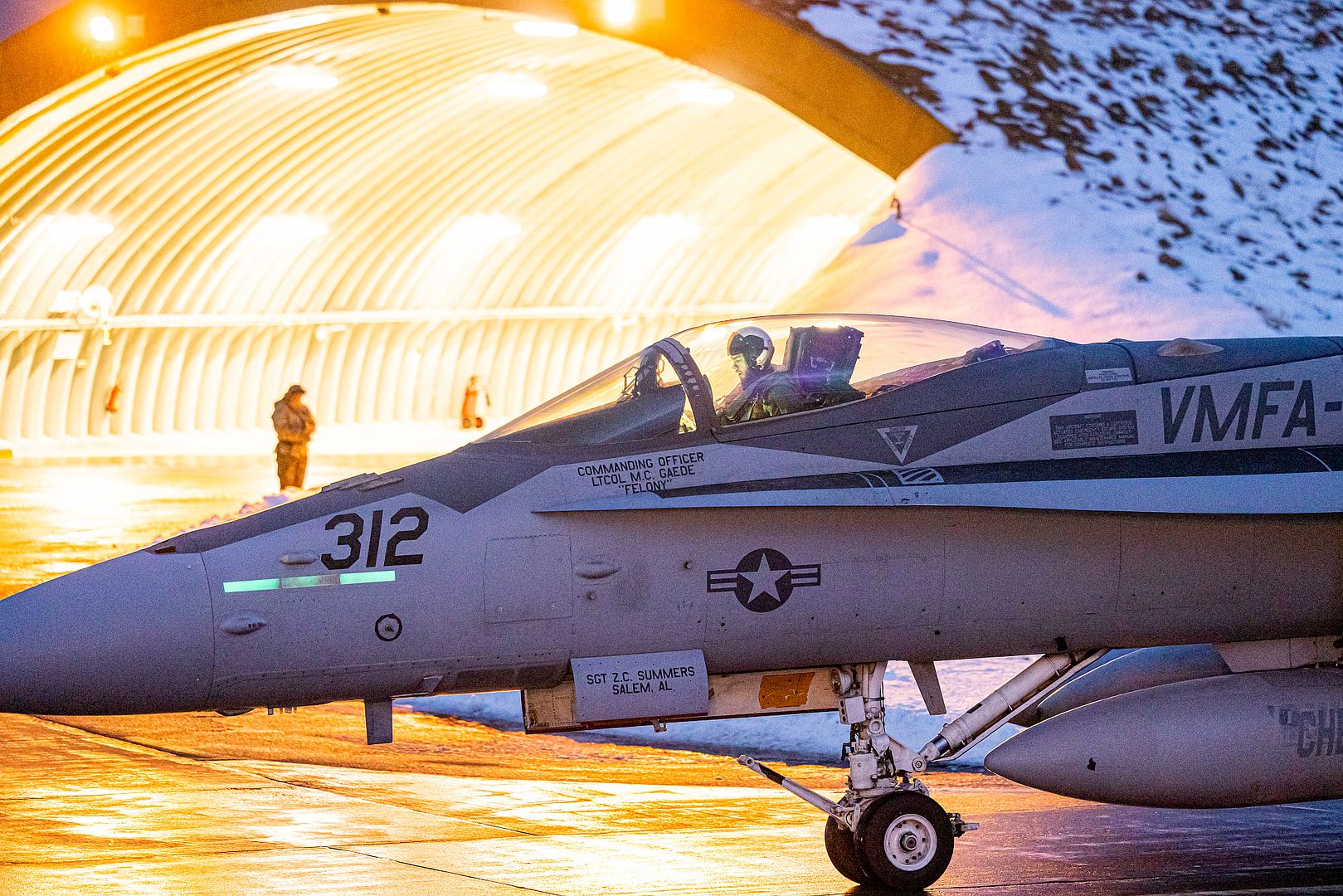
Two U.S. Marine Corps F/A-18 Hornet aircraft, assigned to Marine Fighter Attack Squadron (VMFA) 312, 2nd Marine Aircraft Wing, taxi on a runway after landing in preparation for Exercise Nordic Response 24 at Andenes, Norway, Feb. 21, 2024. Exercise Nordic Response, formerly known as Cold Response, is a NATO training event conducted every two years to promote military competency in arctic environments and to foster interoperability between the U.S. Marine Corps and allied nations. (U.S. Marine Corps photo by 2nd Lt. Duncan Stoner)_312_2nd_Marine_Aircraft_Wing_taxi_on_a_runway_after_landing_in_preparation_for_Exercise_Nordic_Response_24_at_Andenes_Norway_.jpg?width=1920&height=1080&fit=bounds)
A U.S. Air Force B-1B Lancer assigned to the 28th Bomb Wing, Ellsworth Air Force Base, South Dakota, taxis after arriving for Bomber Task Force 24-2 at Luleå-Kallax Air Base, Sweden, Feb. 23, 2024. By maintaining a ready and capable strategic bomber force, U.S. support to coalition forces maintains strategic access and agility in a dynamic security environment. BTF operations provide U.S. leaders with strategic options to assure Allies and partners, while deterring potential adversary aggression across the globe. (U.S. Air Force photo by Staff Sgt. Jake Jacobsen)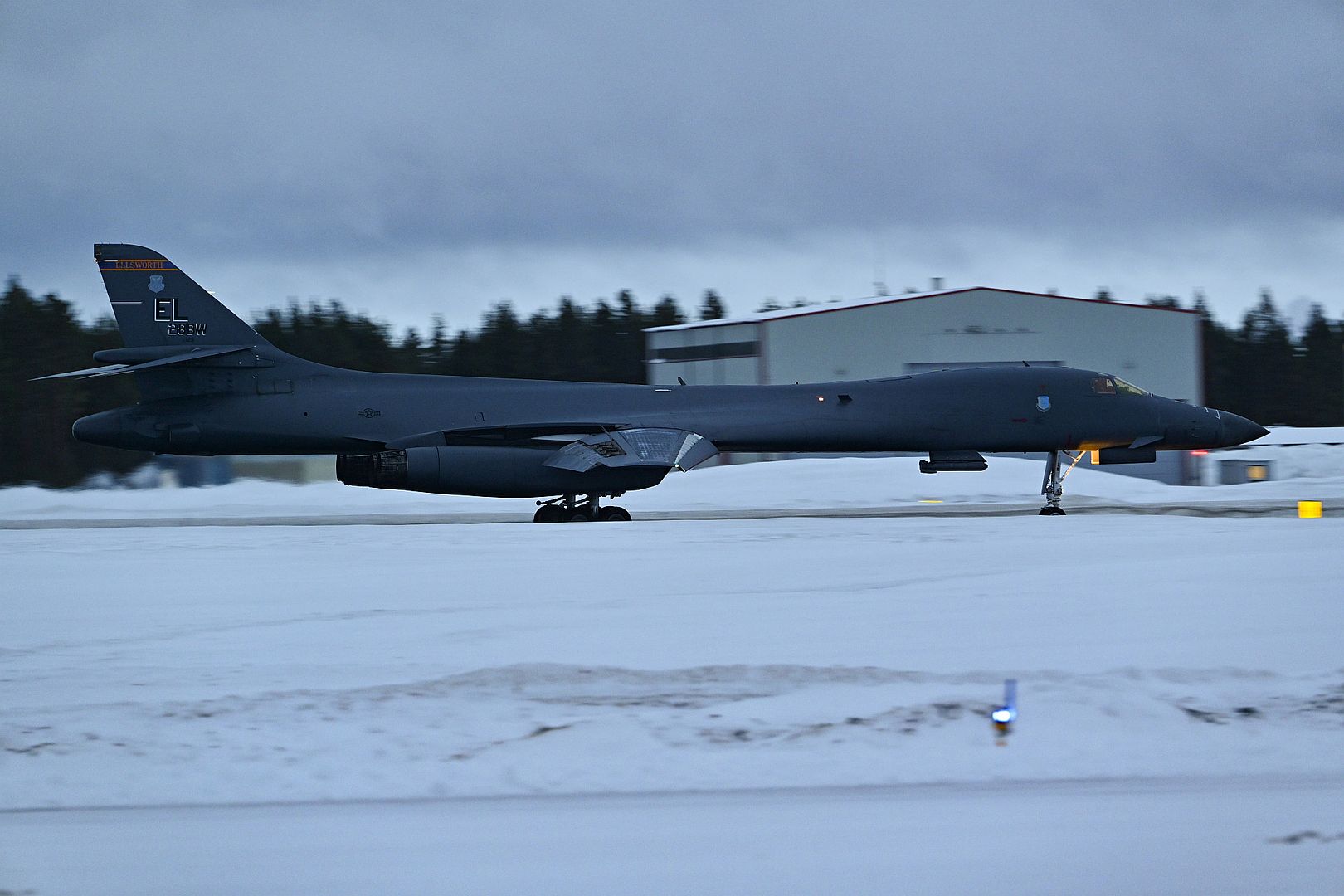
Sailors aboard Nimitz-class aircraft carrier USS George Washington (CVN 73) conduct maintenance on an F-35C Lightning II attached to Strike Fighter Squadron (VFA) 125, while underway in the Atlantic Ocean, Feb. 21, 2024. George Washington is conducting Tailored Ships Training Availability and Final Evaluation Problem (TSTA/FEP). TSTA prepares the ship and crew for full integration into a carrier strike group through a wide range of mission critical operations. (U.S. Navy photo by Mass Communication Specialist 2nd Class Nicholas A. Russell)_125_while_underway_in_the_Atlantic_Ocean_Feb._21_2024..jpg?width=1920&height=1080&fit=bounds)
Saab has today signed a contract with the Swedish Defence Materiel Administration (FMV) and received an order for four additional Gripen C fighter aircraft for Hungary.
This order follows an amendment to the contract between FMV and the Hungarian Government signed in December 2001 regarding 14 Gripen C/D fighters for the Hungarian Air Force. The contract amendment for the four additional aircraft was signed by the Hungarian Ministry of Defence and FMV on 23 February 2024. With this new contract amendment, Hungary will operate a total of 18 Gripen C/D aircraft to protect and defend the Hungarian and NATO airspace.
“With the Gripen fighter, Hungary has one of Europe’s most capable air forces. We look forward to continuing our close collaboration with the Hungarian Government and defence industry,” says Micael Johansson, President and CEO of Saab.
Saab currently has a contract with FMV regarding support for Hungary’s Gripen aircraft, and Saab is ready to provide additional upgrades and support for the Hungarian fighters beyond 2035.
Saab and the Hungarian Ministry of Defence have also signed an MoU regarding development of high-tech industrial areas and fighter aircraft capabilities. The cooperation includes support for the establishment of a Centre of Excellence for VR technologies in Hungary.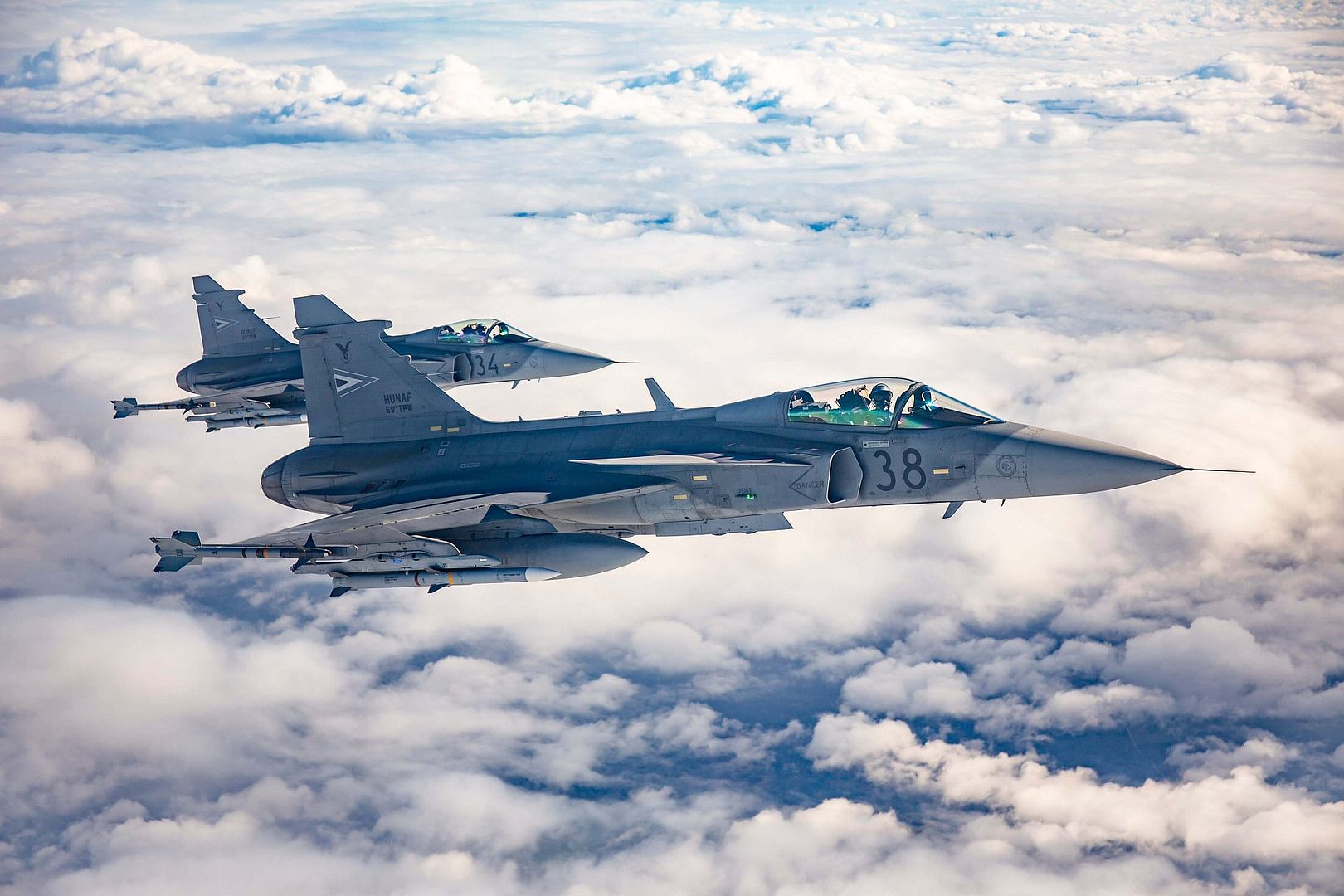
Post a reply
- Go to Previous topic
- Go to Next topic
- Go to Welcome
- Go to Introduce Yourself
- Go to General Discussion
- Go to Screenshots, Images and Videos
- Go to Off topic
- Go to Works in Progress
- Go to Skinning Tips / Tutorials
- Go to Skin Requests
- Go to IJAAF Library
- Go to Luftwaffe Library
- Go to RAF Library
- Go to USAAF / USN Library
- Go to Misc Library
- Go to The Ops Room
- Go to Made in Germany
- Go to Campaigns and Missions
- Go to Works in Progress
- Go to Juri's Air-Raid Shelter
- Go to Campaigns and Missions
- Go to Works in Progress
- Go to Skinpacks
- Go to External Projects Discussion
- Go to Books & Resources
